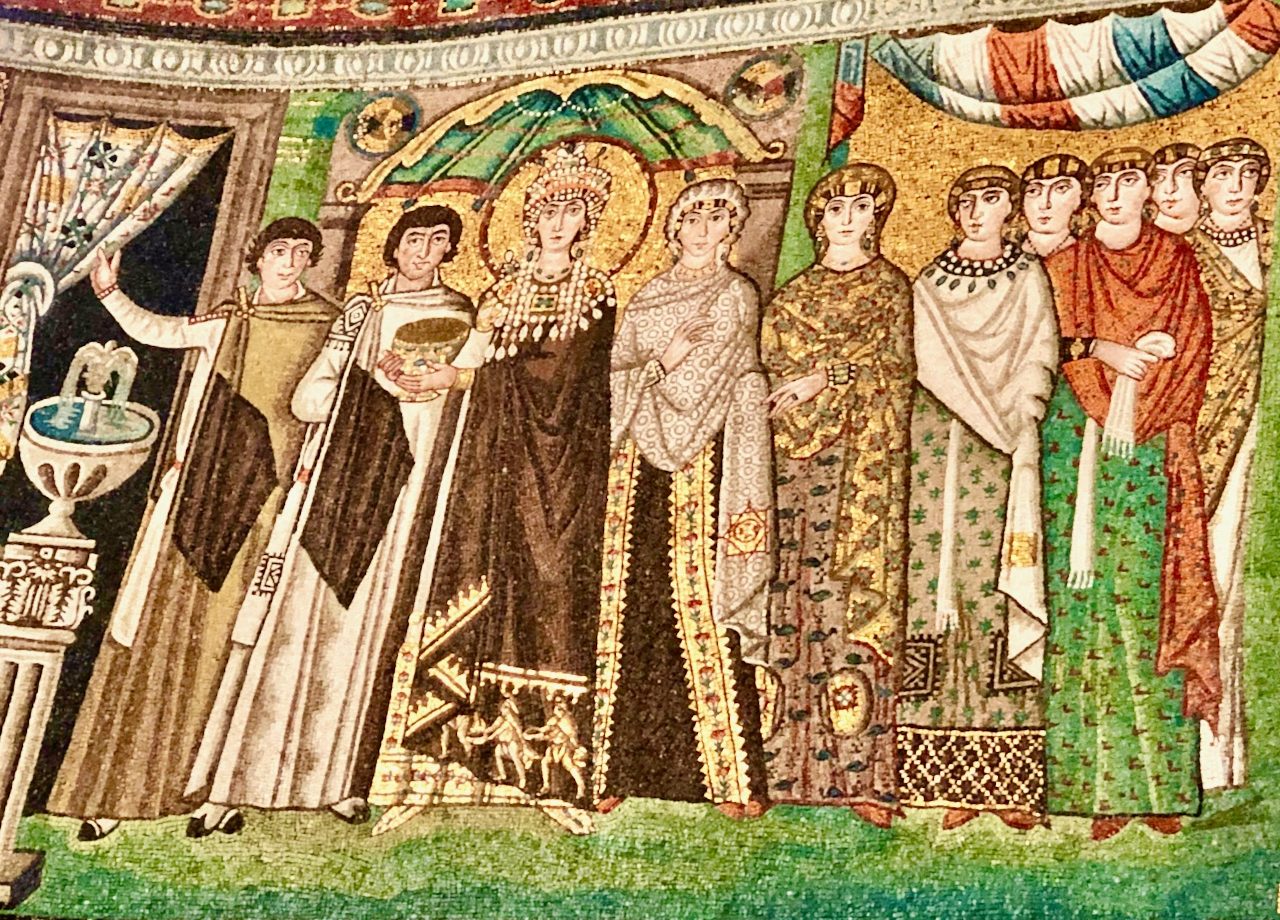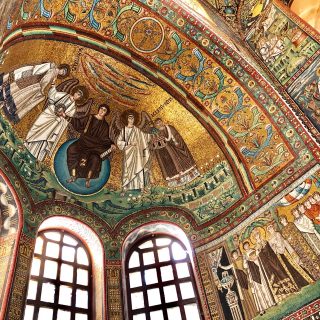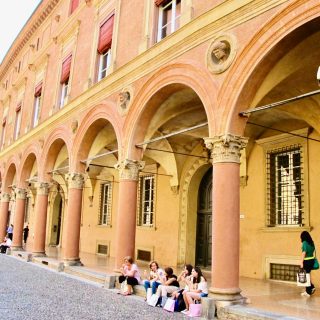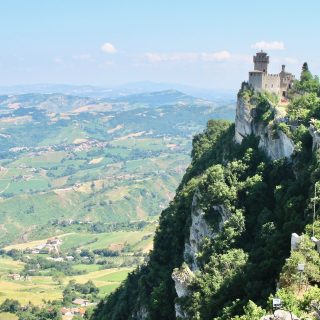Emilia-Romagna, a region in northern Italy, is a multi-faceted destination with a rich artistic and cultural heritage. For a period spanning more than two thousand years, the reigning powers created monuments and traditions that have withstood the test of time; from Roman monuments to Byzantine, Gothic, Romanesque and Renaissance art and architecture. Today, travellers get to admire this legacy by visiting the eleven Art Cities of Emilia-Romagna. Look further afield and you’ll discover countless more artistic and cultural gems scattered across the region.
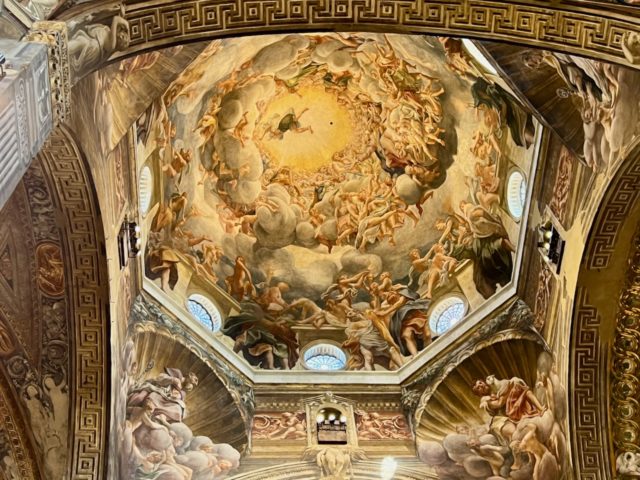
I’ve visited Emilia-Romagna multiple times and the wealth of historic monuments never ceases to amaze me. For those who love art, architecture, history and food, here’s my guide to the treasure trove that is Emilia-Romagna.
In this Art Cities of Emilia-Romagna guide, you’ll read about the eleven Art Cities but I’ve also included my recommendations for nearby places to explore. Their incredible historic and cultural heritage make them the best cities to visit in Emilia-Romagna. There’s also a suggested route below for those who would like to do an art and culture infused road trip in Emilia-Romagna. If you’re arriving by air, I recommend picking up a rental car at Bologna Airport and dropping it off at the airport after your road trip, before visiting Bologna itself.
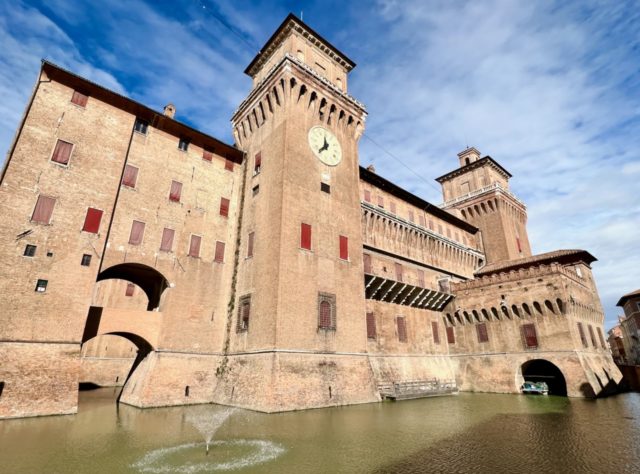
This Art Cities of Emilia-Romagna guide contains links to services I often use myself: Skyscanner (flights), Booking.com (for hotel bookings) and Rentalcars.com (for car hire). If you make a booking via one of these services, I will receive a small commission (at no extra cost to you). These commissions help me to maintain my blog and share more travel experiences with you.
Guide to the Art Cities of Emilia-Romagna
There are eleven Art Cities in Emilia-Romagna, and an interesting thing is that almost all of them are located on a single axis – the old Roman road called Via Emilia, now a major trunk route – which makes it relatively easy to explore by public transport or car.
At the top of the Via Emilia lies Piacenza, which borders Lombardy. From here, the axis continues southeast past Parma, Reggio Emilia, Modena, Bologna, Faenza, Forlì, Cesena and ends in Rimini at the Adriatic Sea. The two Art Cities that are located off the axis are Ravenna and Ferrara. The map below shows the Art Cities and secondary places of interest, as well as the road trip route I followed to visit these places.
This Art Cities of Emilia-Romagna guide follows the route shown above. It starts with Piacenza in the northwest corner of the region, follows the Via Emilia in a southeasterly direction and ends with Ravenna and Ferrara, both of which are located north of the Via Emilia.
It’s possible to do this route in 10-14 days. The orange pins show the eleven Art Cities whilst the green pins denote other towns and villages of historic/cultural interest.
Piacenza
This city in the northwest of Emilia-Romagna (map) lies on the banks of the Po River (Italy’s longest) and has a history that dates back to Roman times. Throughout the centuries, Piacenza was ruled by a succession of powers, from the Romans to the Lombards, the Pope, France and various regional Duchies. Each of these powers left behind a legacy which can still be seen today.
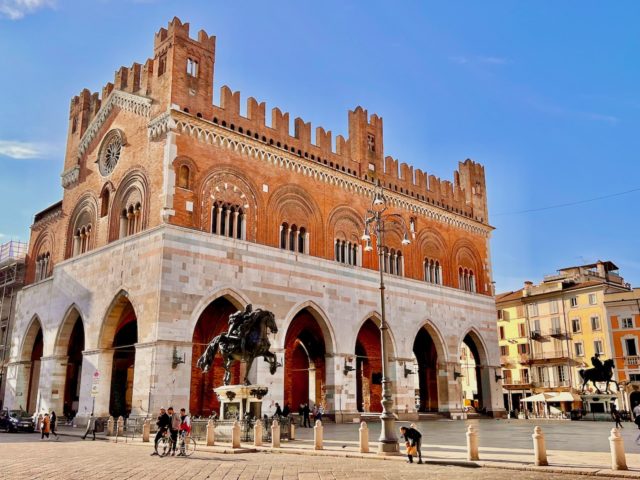
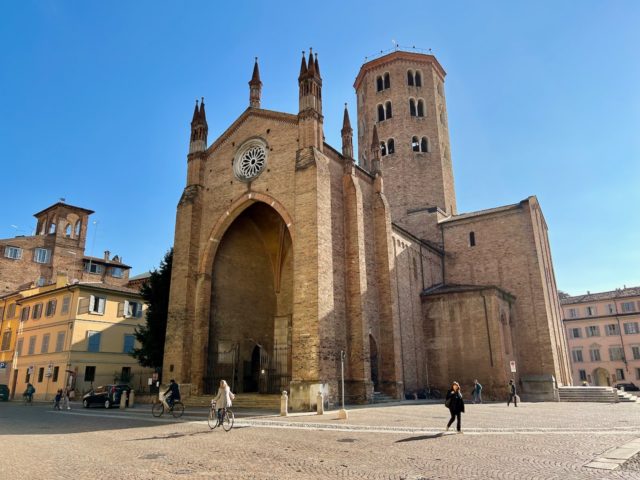
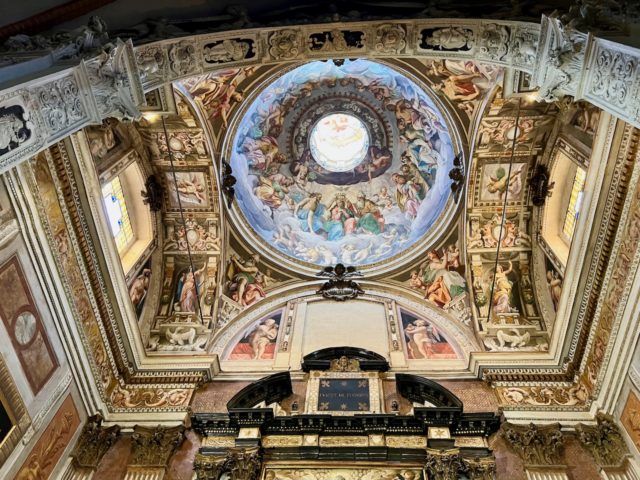
As you explore the city, you’ll discover stately piazzas, beautiful buildings in different styles and bustling streets. The historic highlights of Piacenza include:
- the 13th century Palazzo Communale (or il Gotico), the former town hall;
- Piazza Cavalli, fronting il Gotico, with its two equestrian statues of the Dukes of Parma;
- the 16th century Palazzo Farnese;
- the 12th century Cathedral, a beautiful example of North Italian Romanesque architecture;
- the 12th century, Romanesque/Gothic San Francesco Church, with its 15th-century frescoes and lunette depicting the Ecstasy of St. Francis;
- Basilica of Sant’Antonino, a 4th century church in Romanesque style, with its unique octagonal tower;
- the stately 18th century Palazzo Anguissola di Grazzano.
Search for hotels in Piacenza (Booking.com).
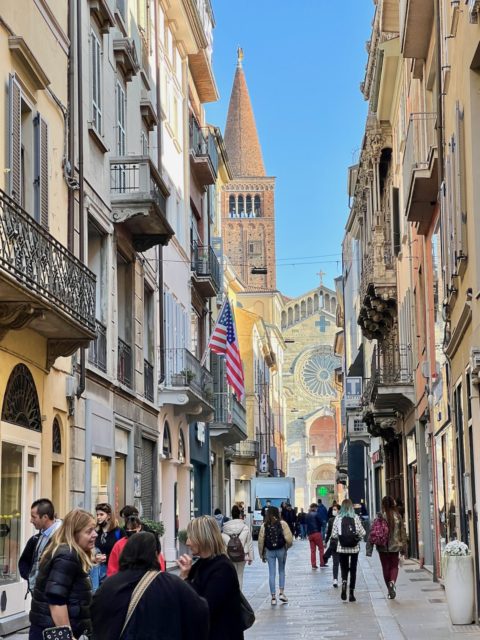
Grazzano Visconti
This ‘medieval’ village, about a 30-minute drive south of Piacenza (map), is something out of a fairy tale! Conceived by Giuseppe Visconti di Modrone (a Milanese aristocrat) in the early-20th century to attract travellers, Grazzano Visconti is perhaps the first ever purpose-built touristic village! Strolling around is like taking a step back in time!
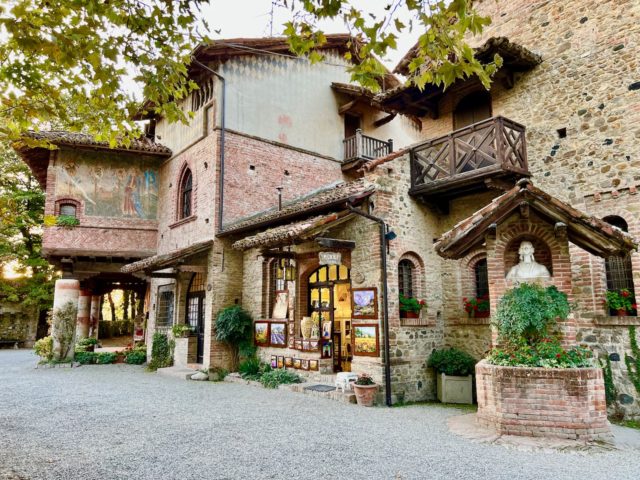
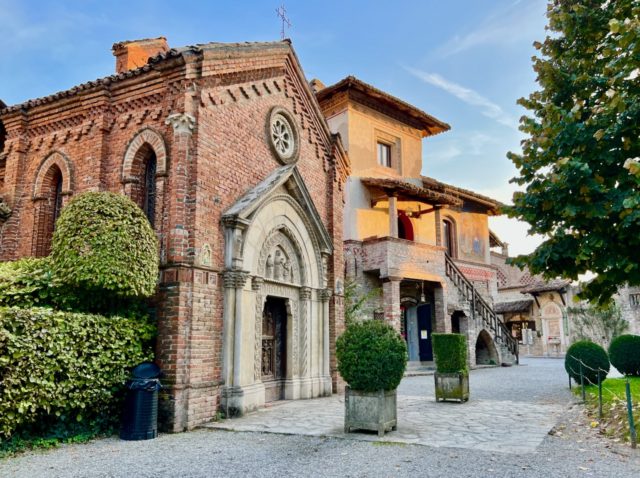
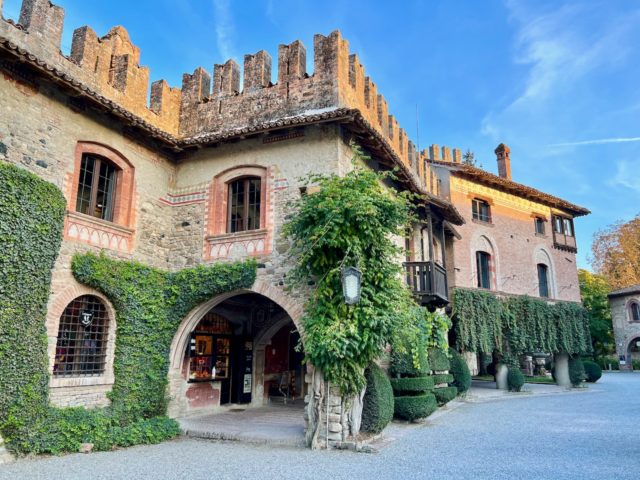
I recommend a visit, if only to admire the gorgeous buildings and soak up the medieval atmosphere. For a meal in Grazzano Visconti, I recommend Ristorante del Biscione.
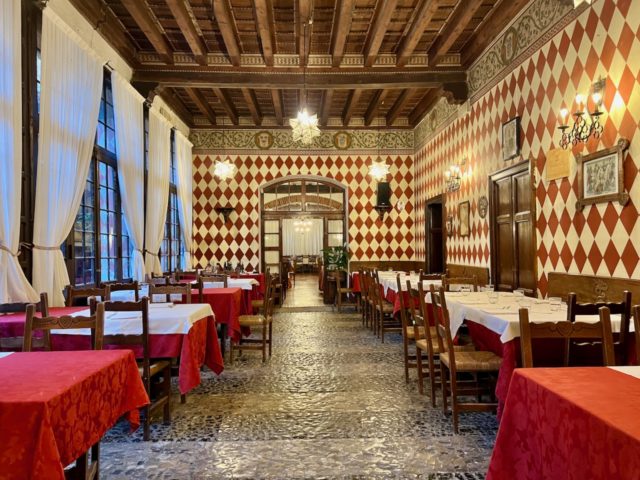
Castell’Arquato
One of the prettiest towns in Emilia-Romagna, Castell’Arquato (map) is just 35 minutes from Piacenza. This charming town is packed with beautifully-restored medieval and Renaissance buildings.
Explore its medieval streets and don’t miss the gorgeous main square, Piazza Municipio (with its Palazzo del Podestà or Town Hall), the Palazzo del Duca and the tower of the Rocca Viscontea, which offers beautiful views.
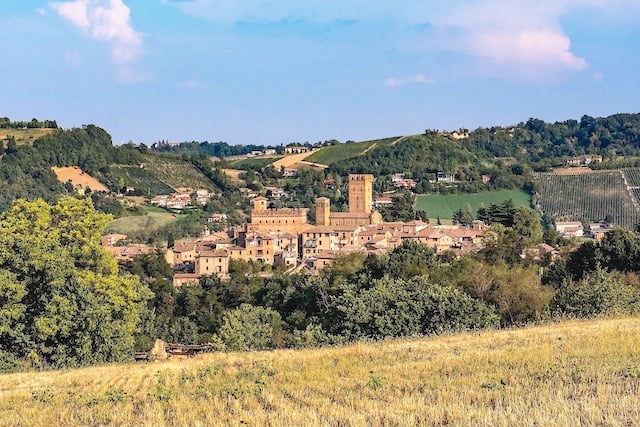
Parma
This city is famous the world over for its ham, cheese and music but it’s also home to a wide array of amazing historic monuments. With a history going back more than 2,000 years, Parma (map) is one of the most important of the eleven Art Cities.
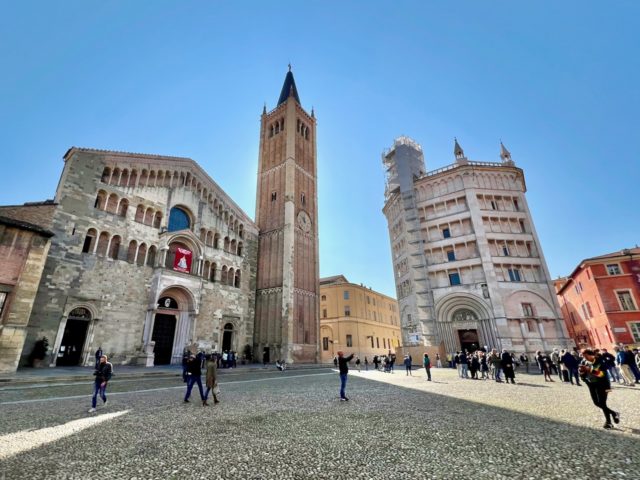
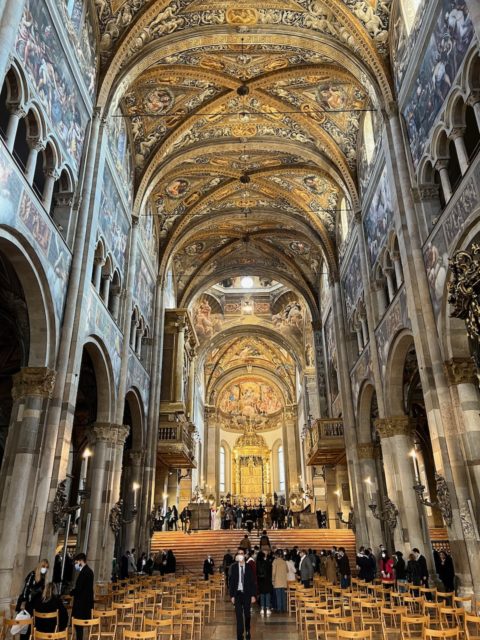
For visitors, the highlight of Parma is undoubtedly the Cathedral and adjacent Baptistry, with their awe-inspiring frescoes, but I recommend spending at least two days in the city to experience its atmospheric streets, grand piazzas and impressive monuments, in addition to its fantastic food.
Here are the highlights of Parma:
- Parma Cathedral (11th century), one of the finest Romanesque Cathedrals in Italy;
- Baptistry of Parma (11th century);
- Piazza Garibaldi, with its statue of Giuseppe Garibaldi (who contributed to the unification of Italy in the 19th century), and stately buildings such as the Palazzo del Governatore (13th century) with its impressive sun dials;
- Palazzo della Pilotta complex, which houses the Academy of Fine Arts, Palatine Library, National Gallery and the Teatro Farnese (a 17th century Renaissance theatre built entirely of wood);
- the Neo-classical Teatro Regio, ‘home’ of the famous composer Verdi;
- And you certainly have to eat! Check out this Parma food guide.
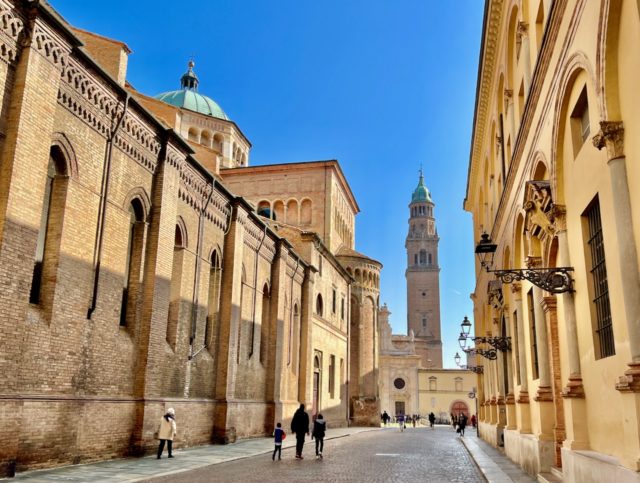
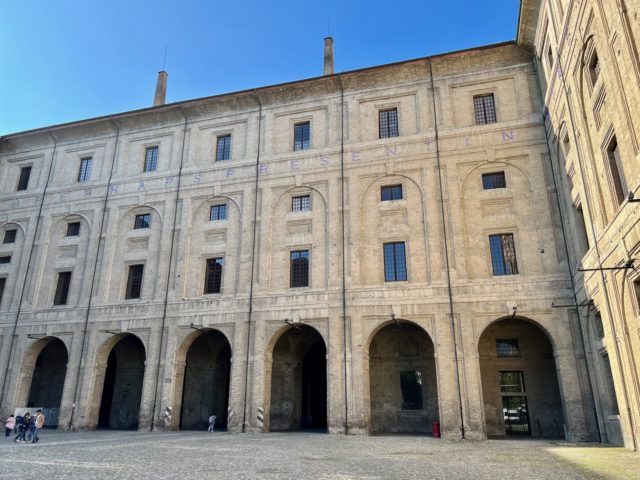
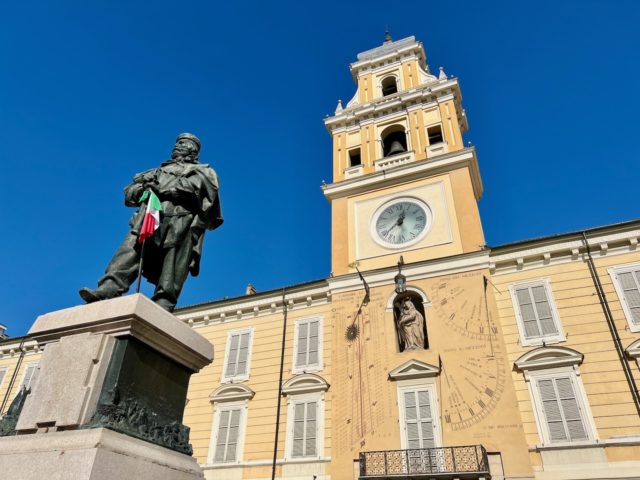

One thing you absolutely have to do in Parma is try its world-famous cuisine. I can recommend Trattoria Corrieri in the old town.
Search for hotels in Parma (Booking.com).
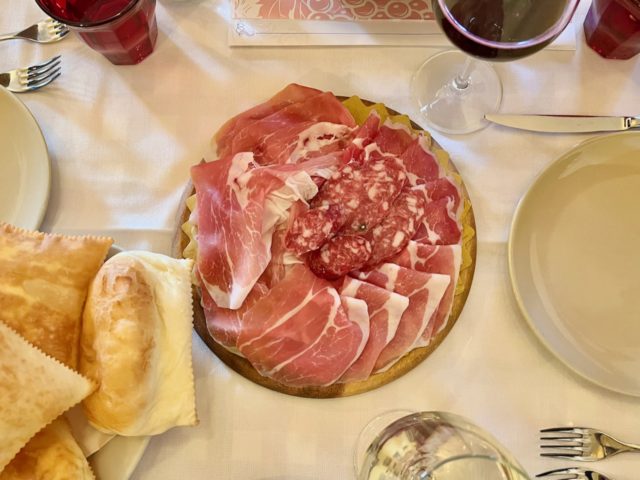
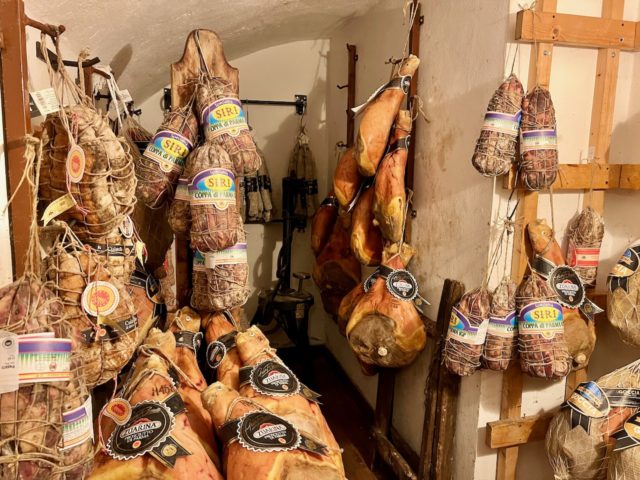
Torrechiara
Perched on a ridge overlooking the Parma Valley, Torrechiara (map) is one of the best preserved medieval fortresses in Italy. Built in the 15th century, the castle houses beautiful frescoed halls and offers stunning views of the valley.
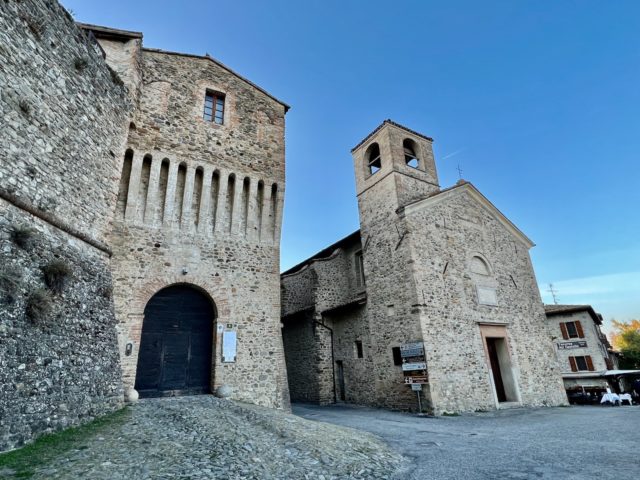
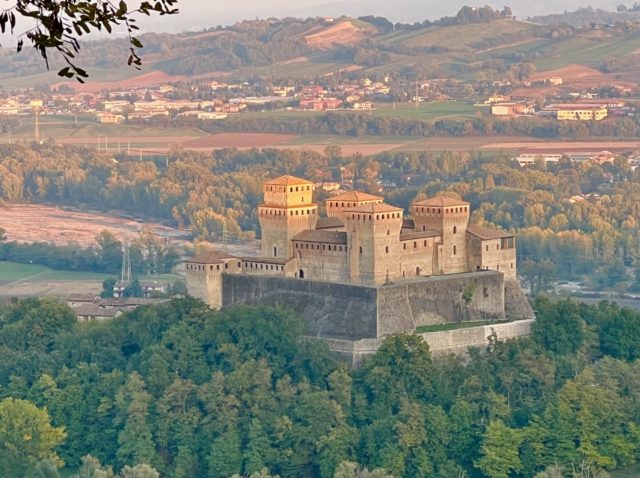
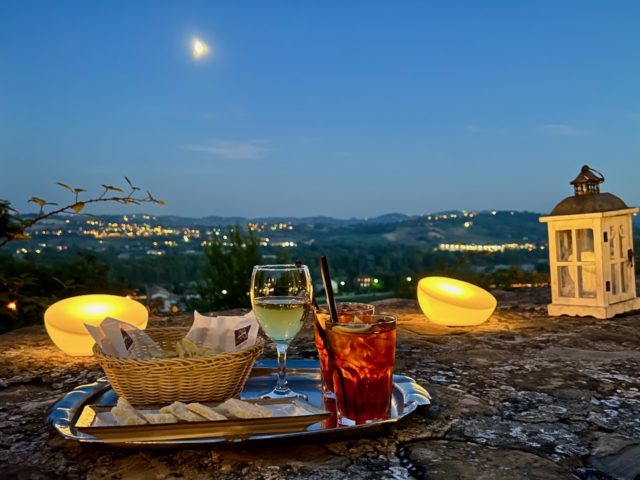
Reggio Emilia
Reggio Emilia (map) was founded during the construction of the Via Emilia in 187 B.C. Today, this city boasts many historic and cultural treasures, such as the 12th century Cathedral, the 10th century Basilica di San Prospero, the 16th century Basilica della Ghiara (in Emilian Baroque style) and the magnificent Teatro Municipale (where Luciano Pavarotti made his stage debut).

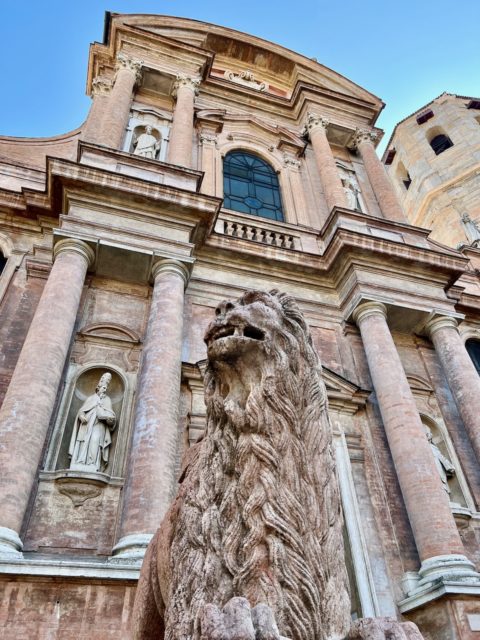
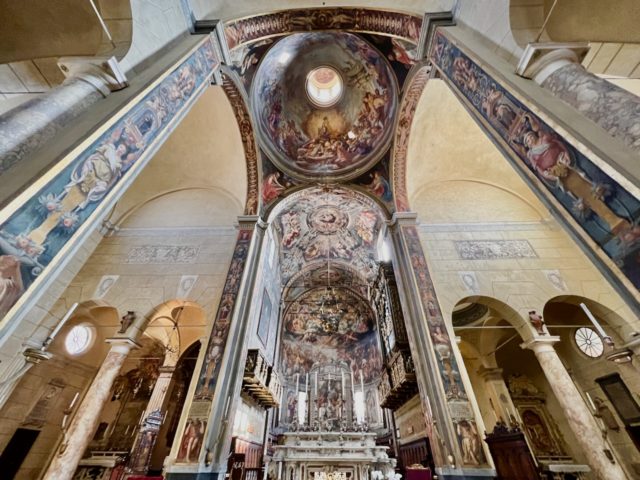
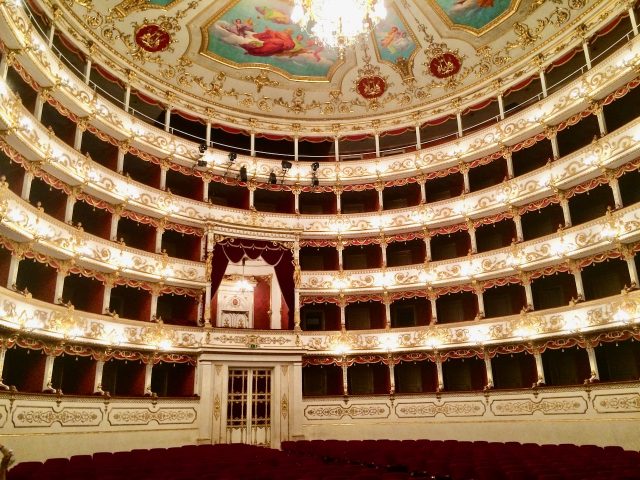
Reggio Emilia is also the city where Il Tricolore, the Italian national flag, was created and hoisted for the first time; the Museo del Tricolore is dedicated to the history of the flag. Search for hotels in Reggio Emilia (Booking.com).
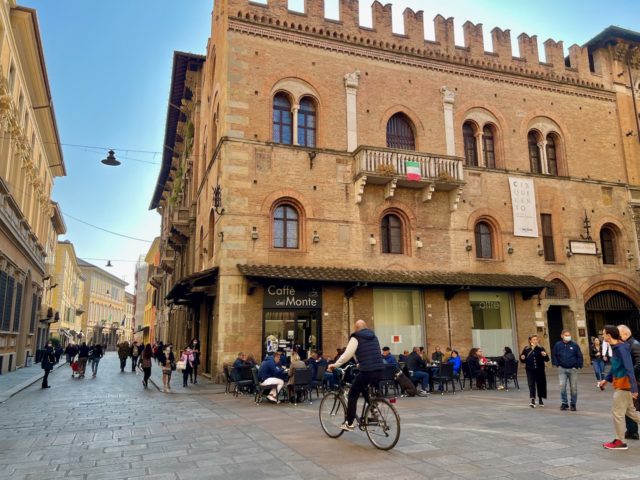
Modena
Located in the epicentre of Italy’s Motor Valley, Modena (map) is the home of some of Italy’s most famous automotive brands such as Ferrari, Lamborghini and Ducati.
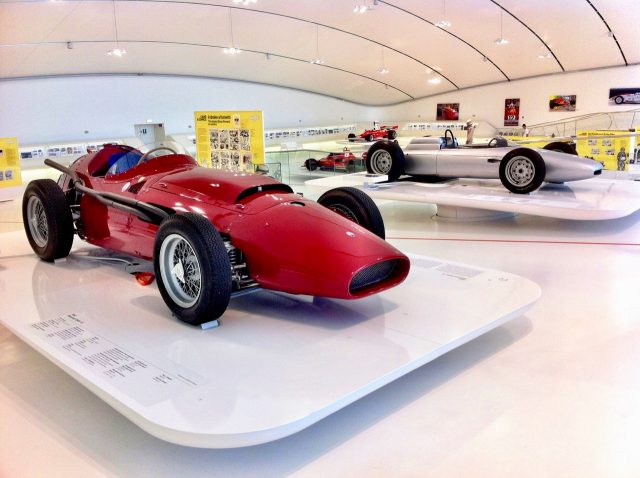
Foodies will most likely associate Modena with balsamic vinegar or balsamico. Indeed, this is the perfect opportunity to visit the producers of some of Emilia Romagna’s most famous food products like Parmigiano Reggiano, balsamico and prosciutto di Modena (Modena ham). Read about my food tour in Modena.
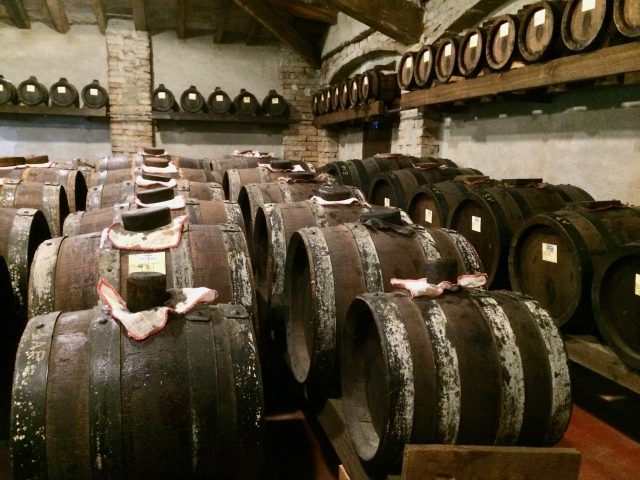
For fans of art and culture, a visit to the Piazza Grande – with its Cathedral and Ghirlandina Tower, a UNESCO World Heritage site – is a must. A short walk away lies the splendid 17th century Baroque Ducal Palace, another Modena highlight. Read about things to do in Modena. Search for hotels in Modena (Booking.com).
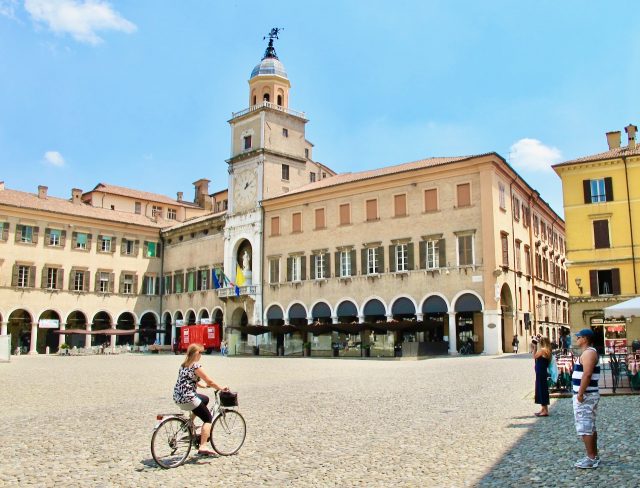
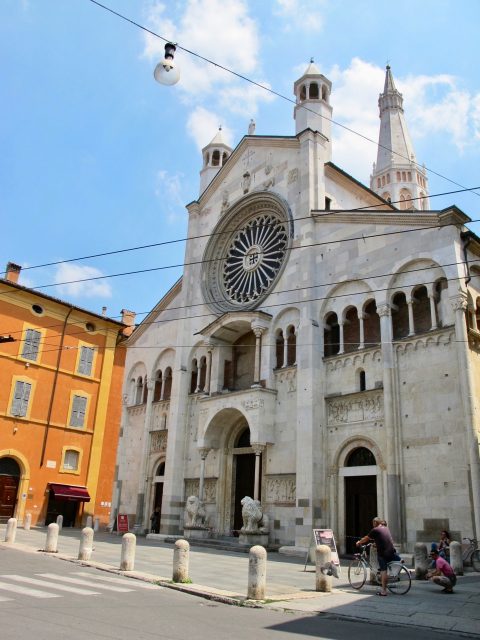
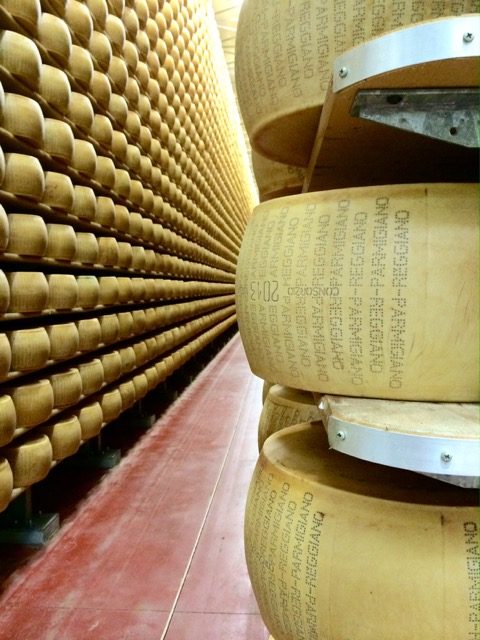
Castelvetro di Modena
This ancient village in the hills south of Modena (map) is absolutely worth a visit for its old world ambiance and beautiful views of the rolling landscapes. Castelvetro di Modena is synonymous with Grasparossa, the most exquisite of Lambrusco varieties, and Trebbiano vines, which are used to create the world famous Balsamico di Modena.
Start your walk at the Piazza della Dama, with its two medieval towers, castle and chessboard square.
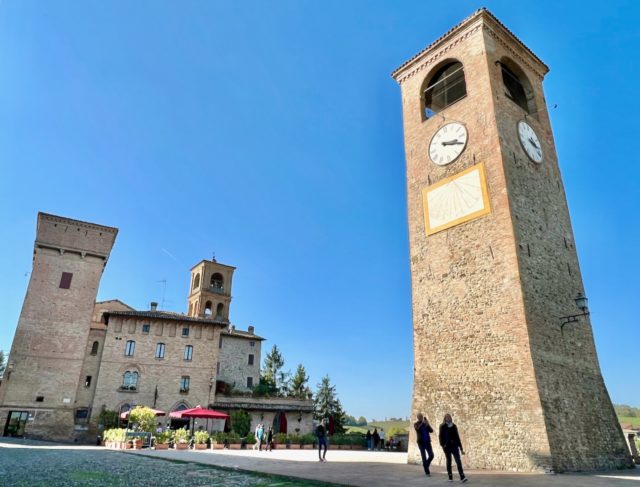
I recommend having a meal at Eglise Café in the old town for a modern take on local cuisine! Search for hotels in Castelvetro di Modena (Booking.com).
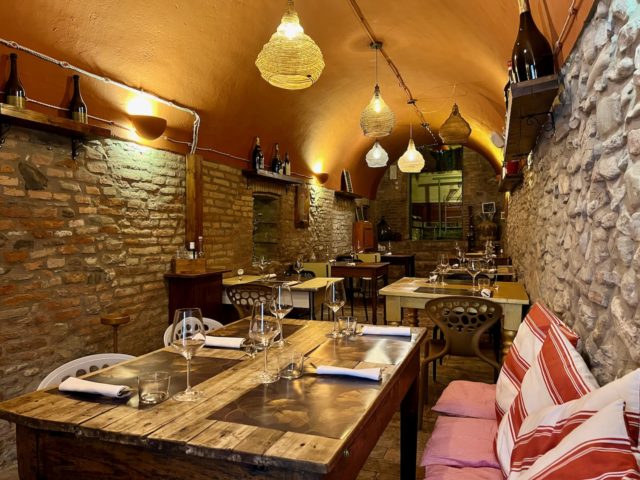

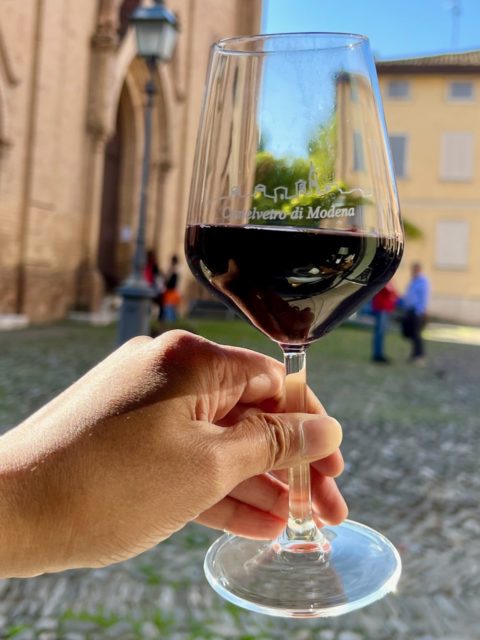
Bologna
The capital of Emilia-Romagna, Bologna (map) is a centre of art, culture and food. Its amazing food and historic architecture are major highlights but stroll around under its almost 40kms of porticoes (covered arcades), browse around its bustling markets, climb one of its historic towers or explore its diverse food scene and you’ll discover a gem of a city that’s worth returning to again and again.
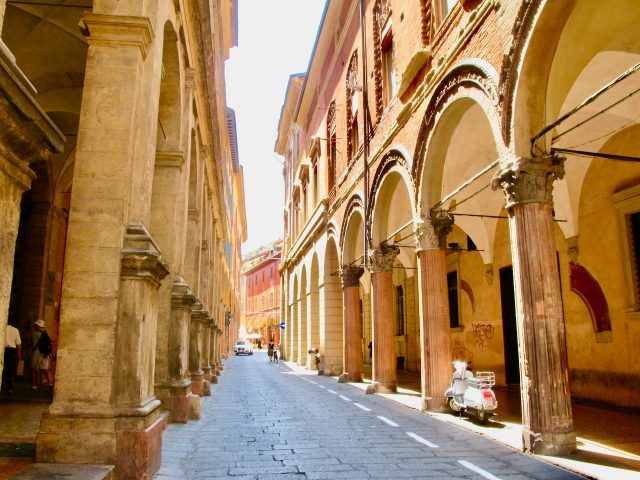
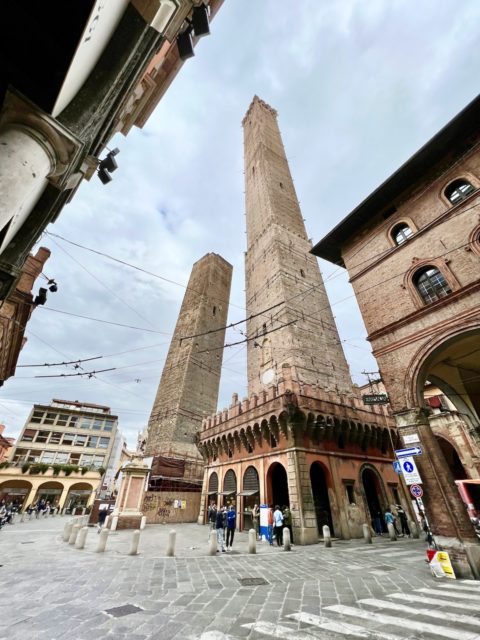
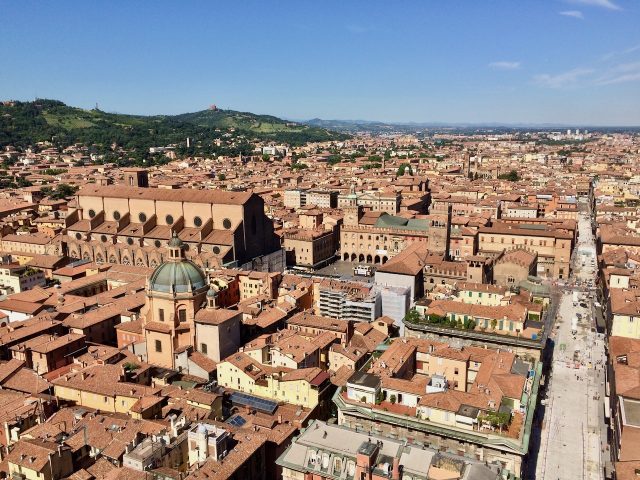
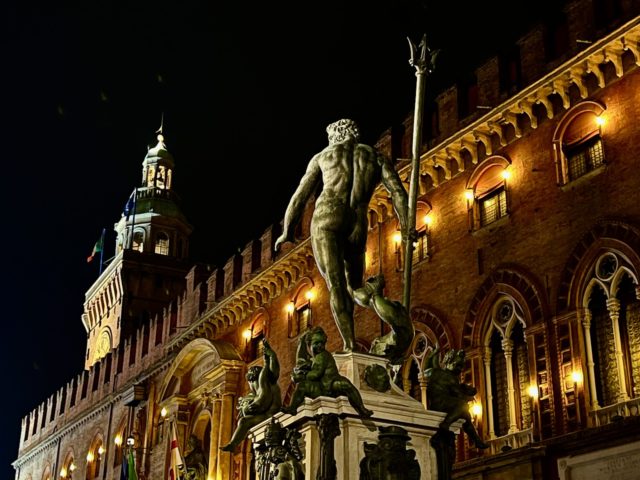
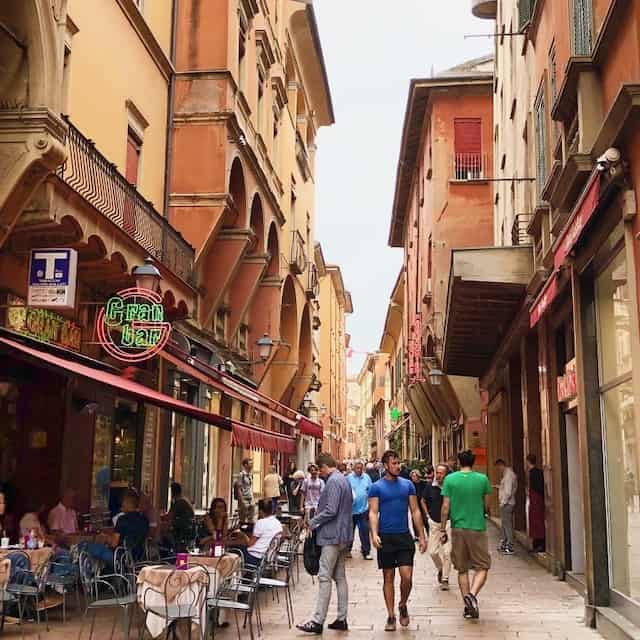
There are countless things to do in Bologna but here are some of my recommendations:
- Stroll under the historic porticoes (arcades) in the historic centre;
- Climb the Asinelli Tower (Italy’s tallest leaning tower) for amazing views;
- Soak up the atmosphere in Piazza Maggiore, with its Gothic Basilica di San Petronio, medieval palaces and iconic statue of Neptune;
- Visit San Stefano (a complex of seven churches), including the 5th century Church of the Holy Sepulchre;
- Visit the antique market at Piazza Santo Stefano every Sunday;
- Browse around the deli’s and markets in the Quadrilatero district and join the locals for an aperitivo (happy hour) at Via Rizzoli;
- Visit the Ducati Museum just outside the city;
- Check out this Bologna food guide,
Search for hotels in Bologna (Booking.com).
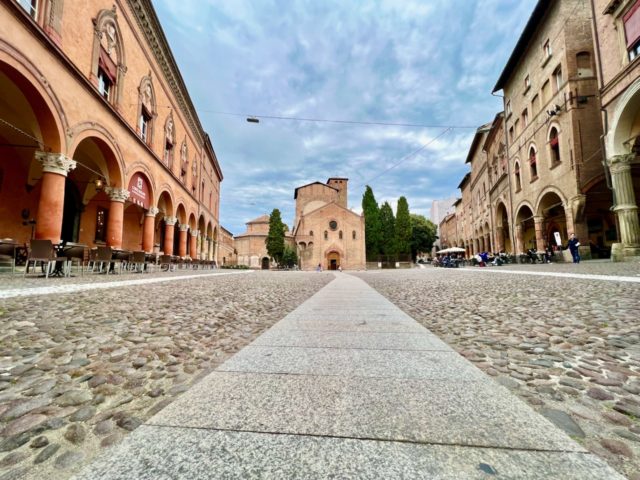
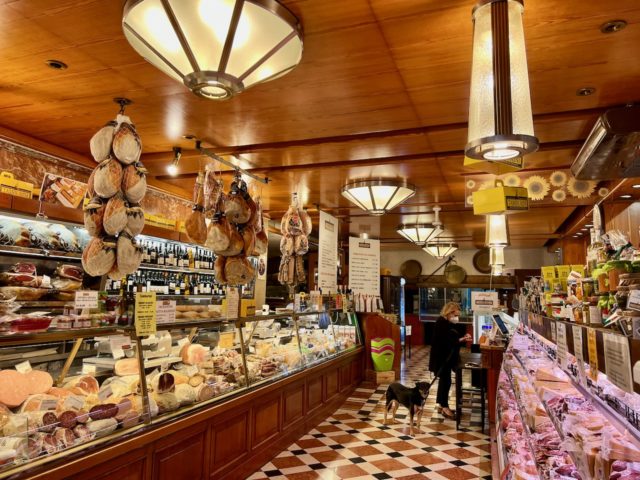
Dozza
The hilltop village of Dozza lies east of Bologna (map) and is best known for its annual Wine Festival and Biennial Exhibition of the Painted Wall (Muro Dipinto). During this exhibition, artists from Italy and around the world are invited to decorate the village’s walls with colourful murals, in effect transforming the village into an open-air museum.
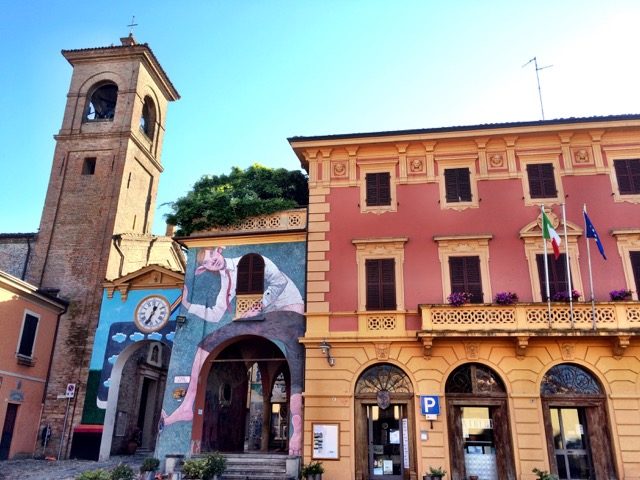
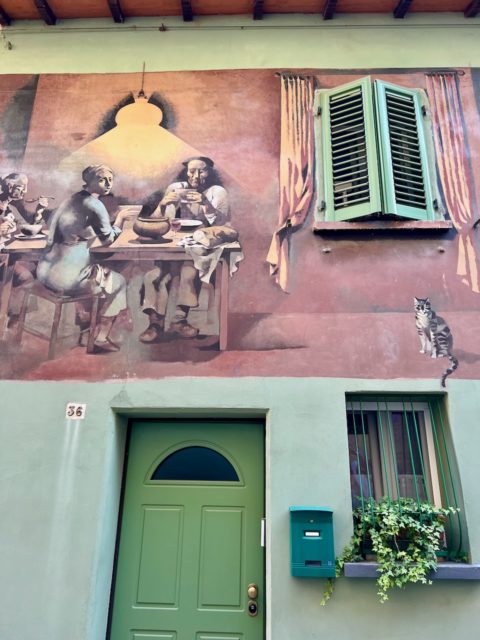
The village’s imposing fortress, Rocca Sforzesca, is home to the Enoteca Regionale dell’Emilia Romagna (the regional wine store for the Emilia Romagna region). It has more than 800 different wines and other products like olive oils, balsamico and jams. You can’t leave the village without visiting the Enoteca and tasting some of the wines.
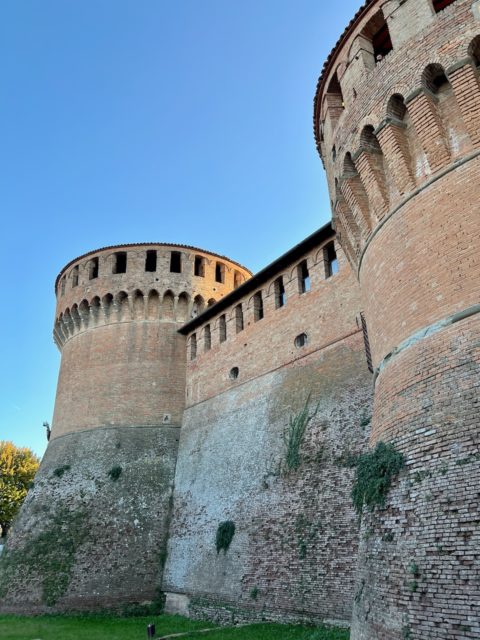
Faenza
Famous for its ceramics, Faenza is a beautiful city with charming streets and impressive squares. Founded more than 2,000 years ago, Faenza (map) has become synonymous with ceramics (majolica or fine tin-glazed earthenware). In fact, its name is used in various languages such as French (faïence) and English (faience) to describe this type of ceramic.
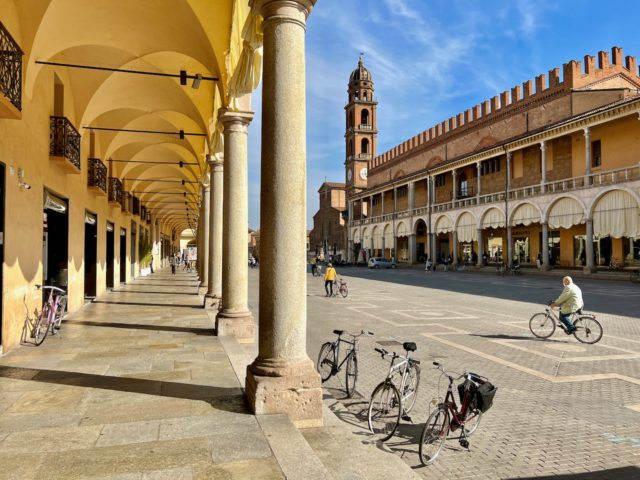
The city centre is dominated by the expansive Piazza del Popolo, a square lined by the grand porticoes of the Palazzo Municipale and Palazzo del Podesta. Adjacent to this square lies Piazza della Liberta, with its 15th century Cathedral (rich in Renaissance art) and an imposing monumental fountain with 17th century bronze statues.
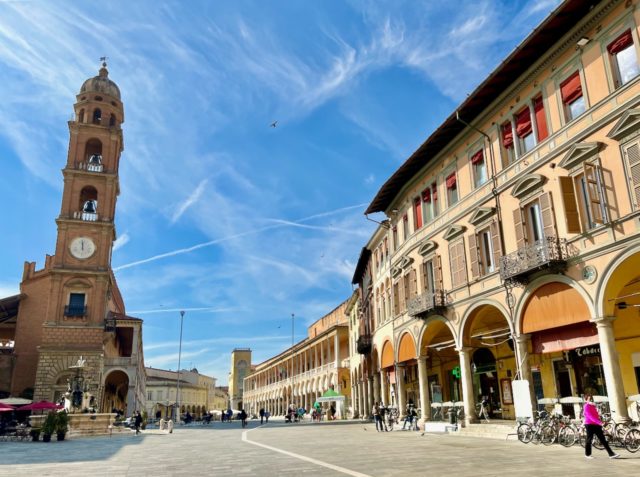
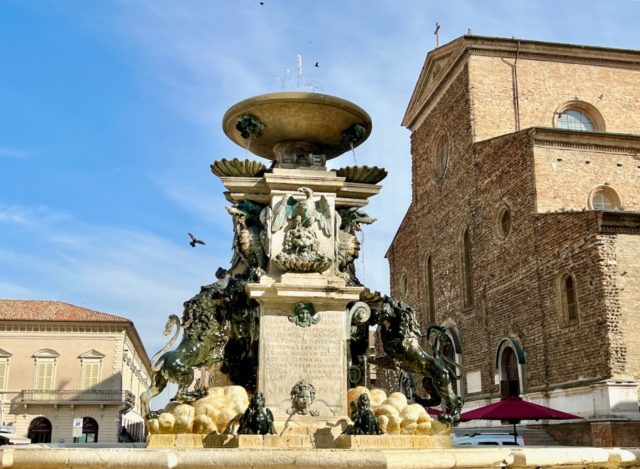
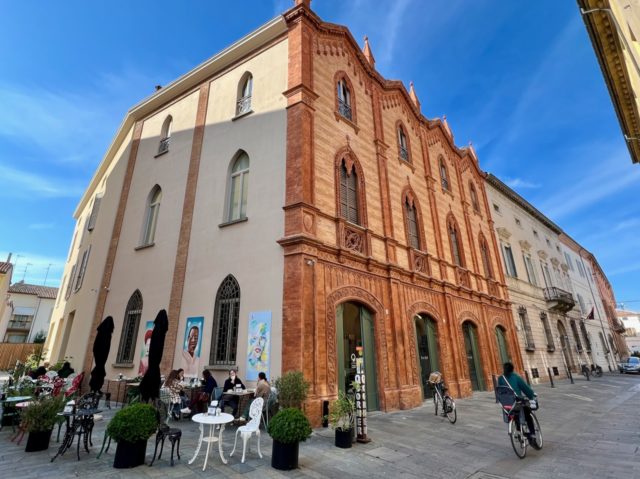
You can’t miss a visit to one of the ceramics stores in Faenza. There are several along Corso Giuseppe Garibaldi, amongst which, Silvagni Laura, who took the time to tell me more about Faenza ceramics.
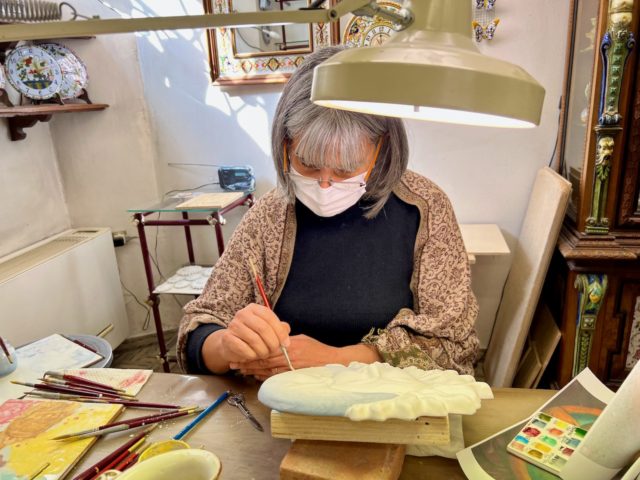
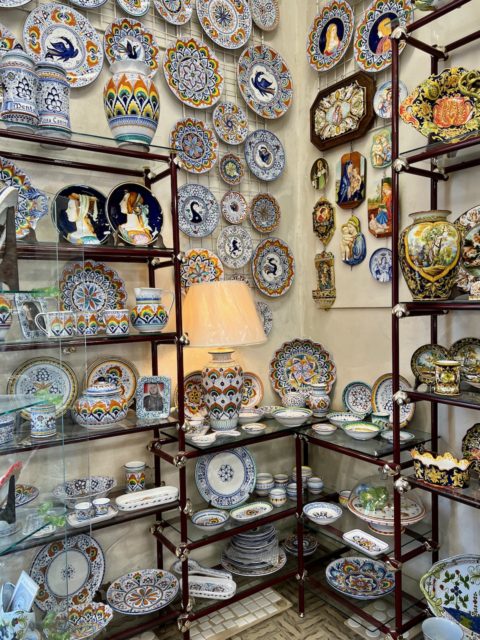
Other places of interest include the International Museum of Ceramics and the Pinacoteca, the city museum. Search for hotels in Faenza (Booking.com).
Brisighella
Brisighella is situated in the hilly countryside south of Faenza (map) and is often listed as one of the most beautiful medieval villages in Italy.
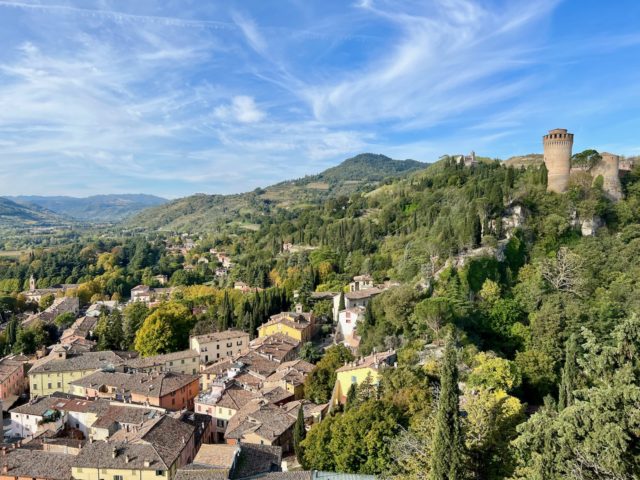
One of the most notable historic sites in the village is the Via del Borgo or Via degli Asini (“Donkeys’ Road”), an elevated road used in medieval times to transport goods.
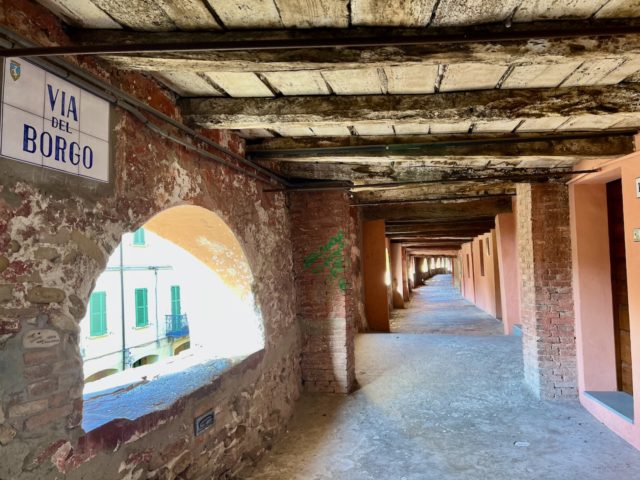
Overlooking the village are three prominent structures: the 13th century Rocca or the Rock of Brisighella (a castle with cylindrical towers), the Torre dell’Orologio (clock tower built in the 19th century) and the 18th century Santuario del Monticino.
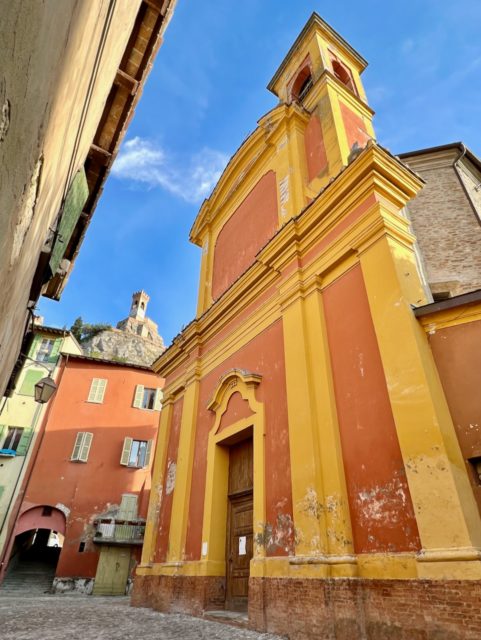
I recommend climbing to the clock tower for breathtaking views of the village and the valley below. There are numerous other hiking paths that start in the village and continue around the hills. For nature lovers, I recommend hiking in the nearby Parco Regionale della Vena del Gesso Romagnola. Read more about things to do in Brisighella.
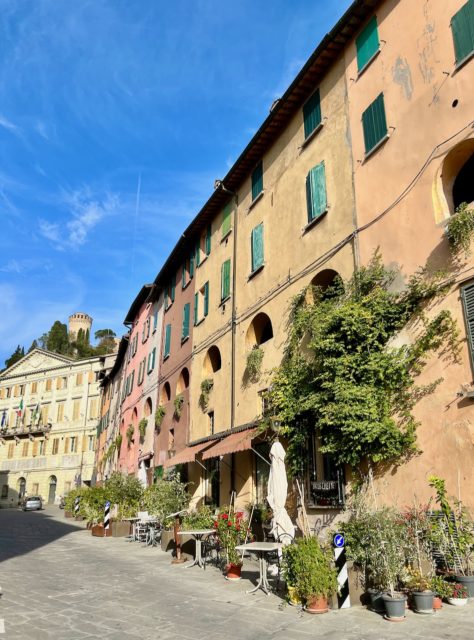
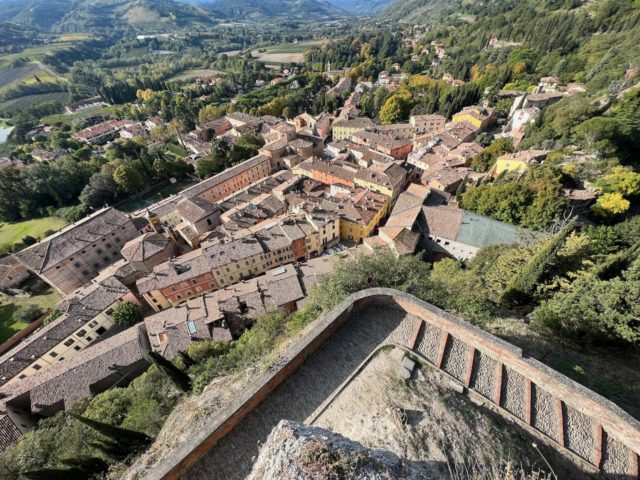
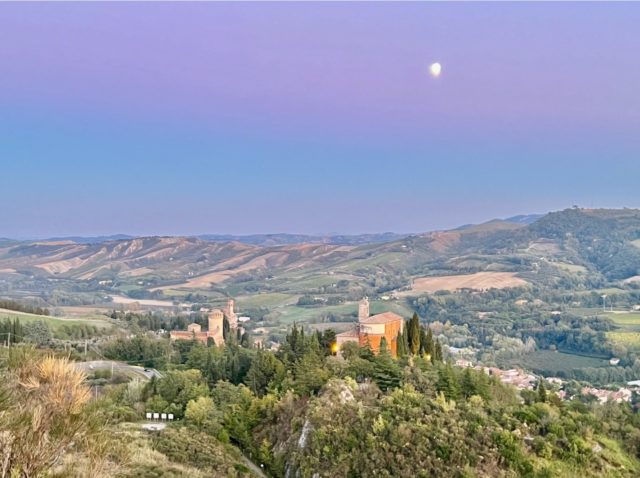
I recommend spending a night in Brisighella to enjoy the picturesque village and its beautiful surroundings. One place I can recommend for a meal is Ristorante La Grotta, a fine dining establishment in a cave setting. I stayed at Modus Vivendi in the village centre.

Forlì
Forlì was founded by the Romans in the 2nd century B.C. as Forum Livii along the Via Emilia (map), which was being built at the time. These days, it’s an important agricultural centre with several significant historical monuments.

The main square, Piazza Aurelio Saffi, is the location of several notable sights including the Romanesque Abbey of San Mercuriale with its beautiful 12th century original bell tower, and the Town Hall, with its clock tower. Another place of interest for art enthusiasts is the Musei di San Domenico, an art museum located in a 13th century convent.
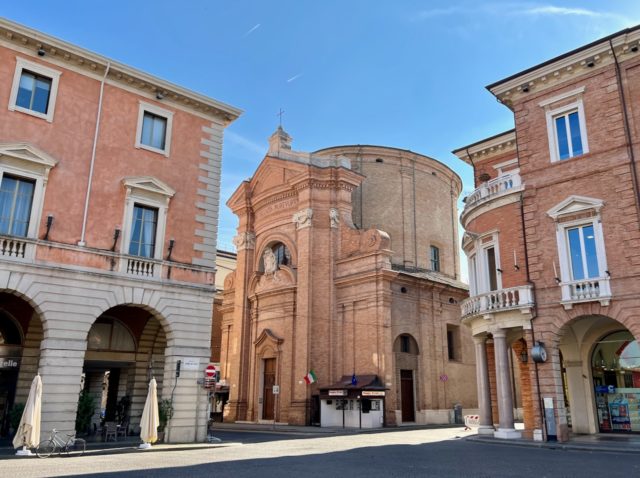
Forlì is also famous for its wonderful cuisine. One restaurant I can recommend in Forlì is Osteria del Mercato, which serves delicious local fare and wines. If you’re a foodie, you should plan some time at Casa Artusi, a culinary centre and cooking school located in nearby Forlimpopoli.
Bertinoro
Situated on a hilltop, a 30-minute drive from Forli, Bertinoro (map) is often called the ‘Balcony of Romagna’ for its panoramic views of the Romagna landscapes. This medieval citadel is absolutely worth the diversion from the Via Emilia – the scenic drive there is one great reason!
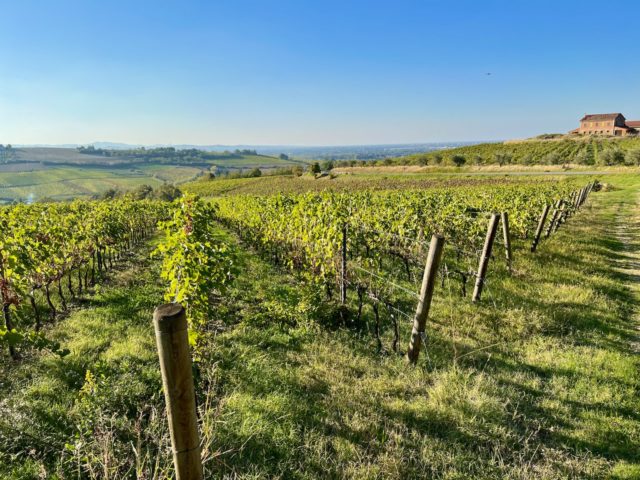
The main square, Piazza della Libertà, offers lovely views that stretch to the sea, but stroll around the village and you’ll discover more splendid views.
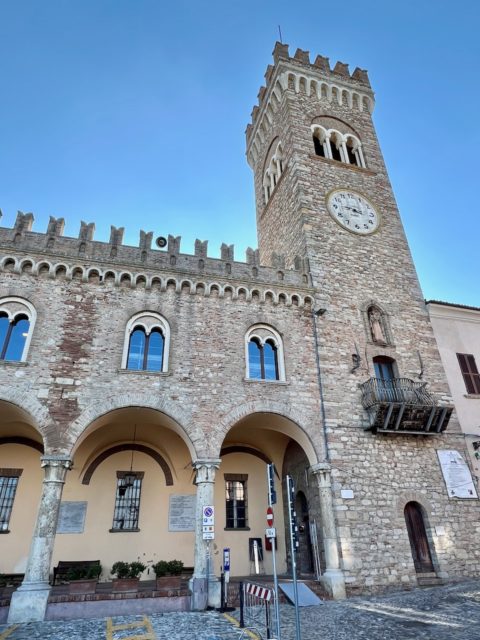
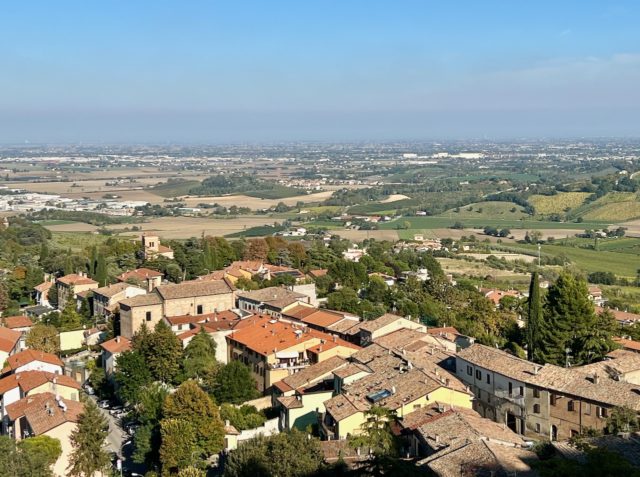
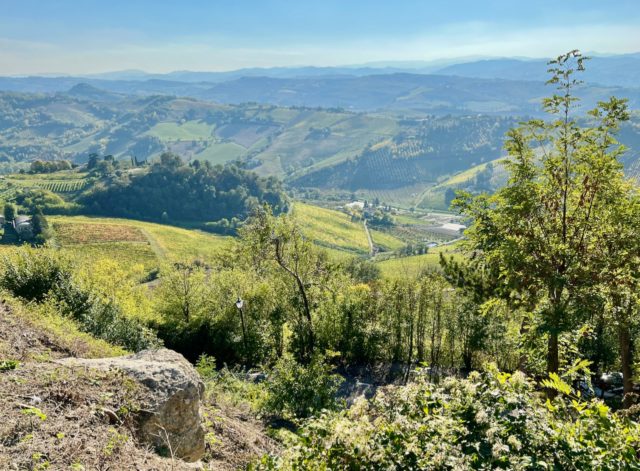
Cesena
Originally an Etruscan town, Cesena (map) came under the rule of the Romans in the 3rd century B.C. and thrived due to its strategic location. In the 14th-15th centuries, the city prospered under the rule of the Malatesta, amongst the most important and influential dynasties in Romagna in the Late Middle Ages.
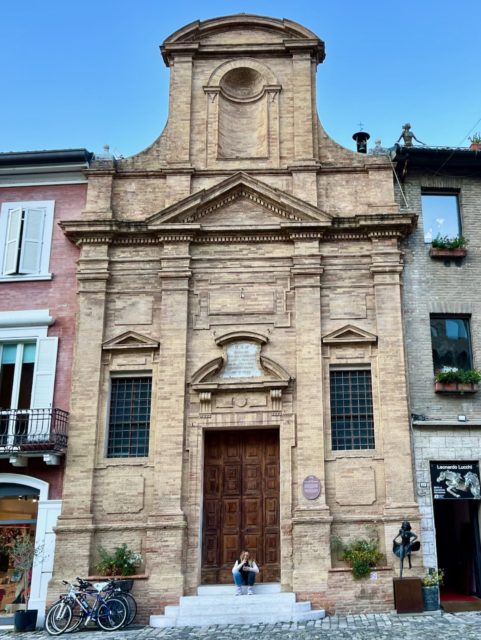
As one of the Art Cities of Emilia-Romagna, Cesena is home to numerous monuments which can still be seen today, such as the 15th century Rocca Malatestiana (castle) and Malatestiana Library. The Library, the first civic library in Europe, and now a UNESCO ‘Memory of the World’ site, is known for its Renaissance architecture and ancient manuscripts.
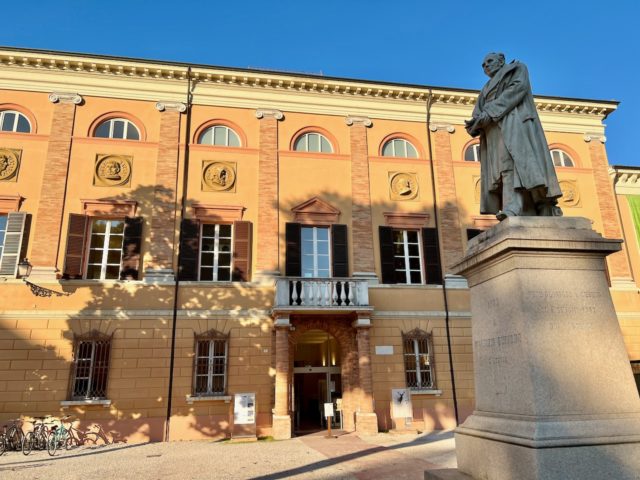
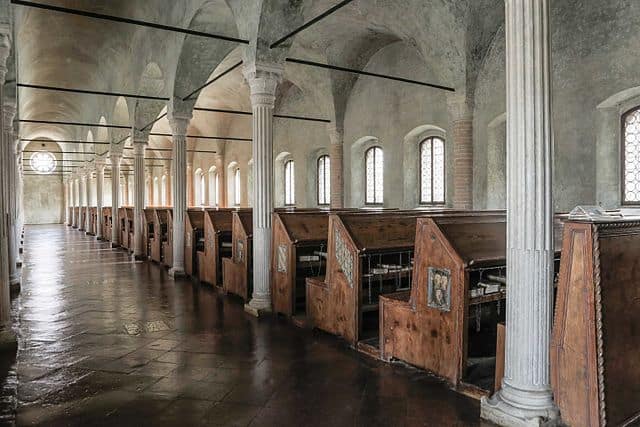
Cesena is a gorgeous city to explore. Start at the Piazza del Popolo, overlooked by the Rocca Malatestiana, and explore the maze of streets on the way to the Library.
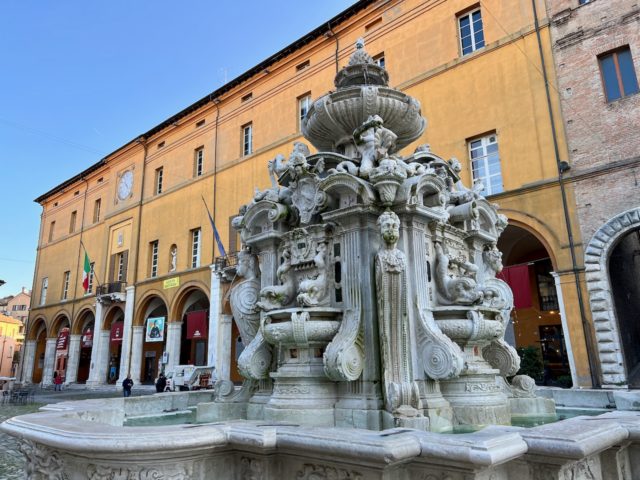
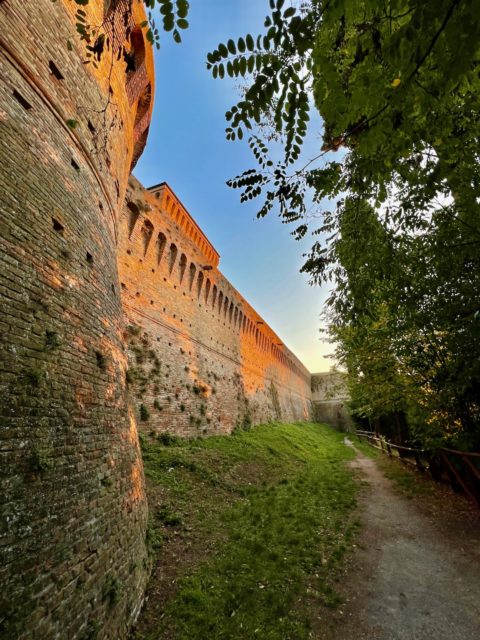
A great place to stay and dine lies on the outskirts of Cesena: the Quel Castello di Diegaro. This castle houses a very popular restaurant, with fine dining and pizzeria sections, and has stylish rooms on the upper floors.
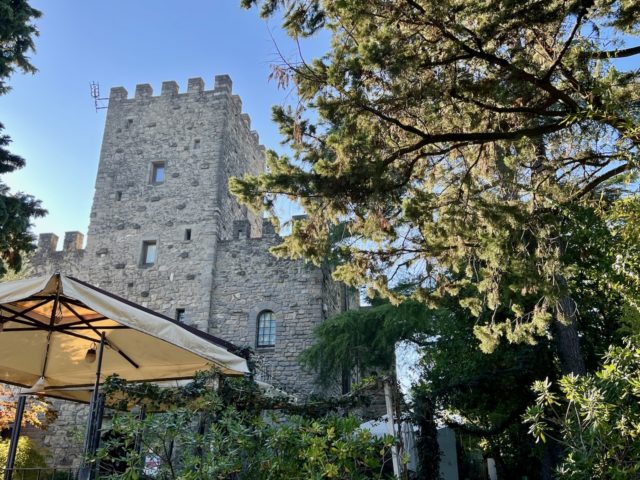
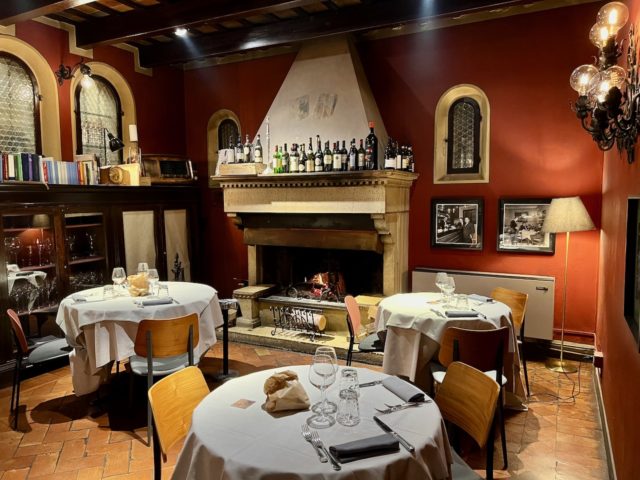
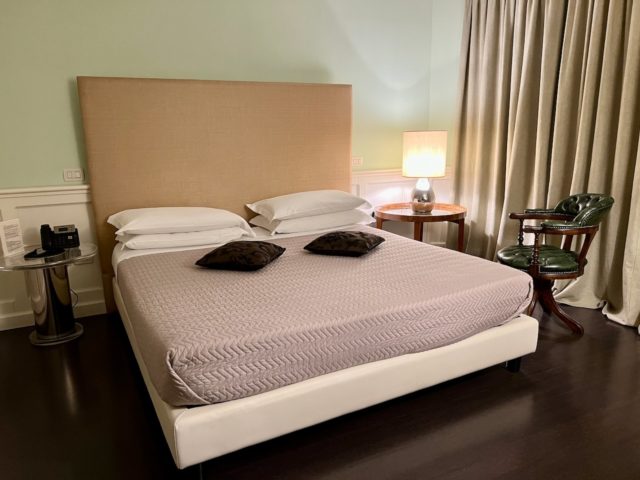
Longiano
This medieval village (map), situated southeast of Cesena, is dominated by the imposing 13th century Castello Malatestiano.
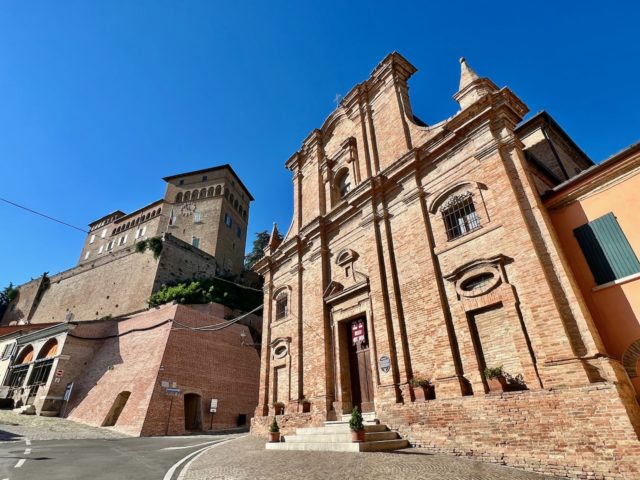
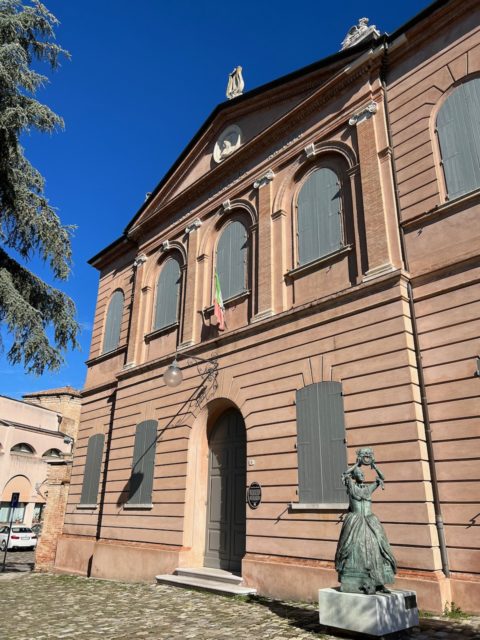
Other places of interest include the 19th century Teatro Petrella and the Rifugio, a tunnel through the hill that formed a refuge for the village people during WWII. The drive there from the Via Emilia, through the Romagna hills and vineyards, is absolutely beautiful.
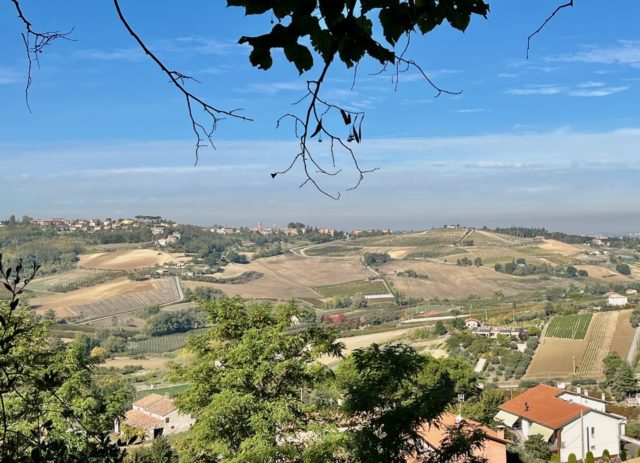
Santarcangelo di Romagna
Not far from Longiano, on the Via Emilia, lies another charming medieval town: Santarcangelo di Romagna (map). This is another of my favourite towns in Emilia-Romagna! The old town, with its picturesque streets, colourful houses, and nostalgia-inducing shops and cafés, is a delight to explore.
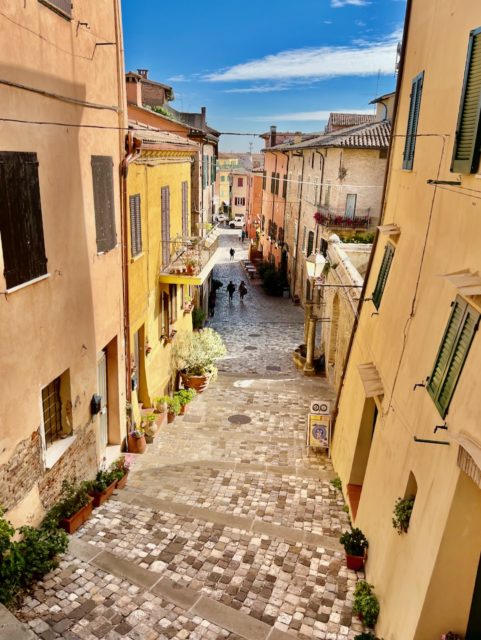
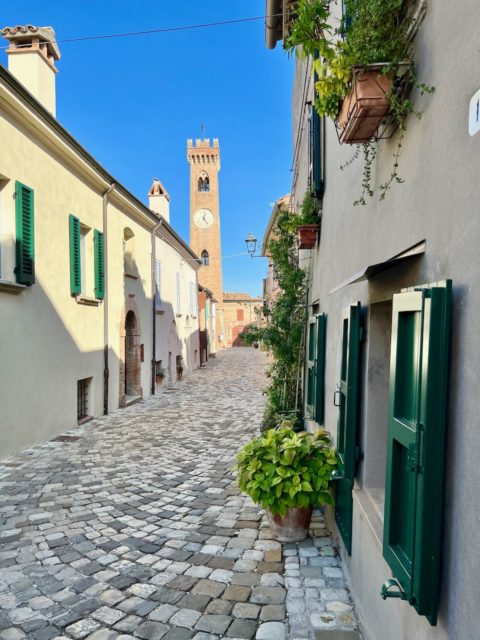
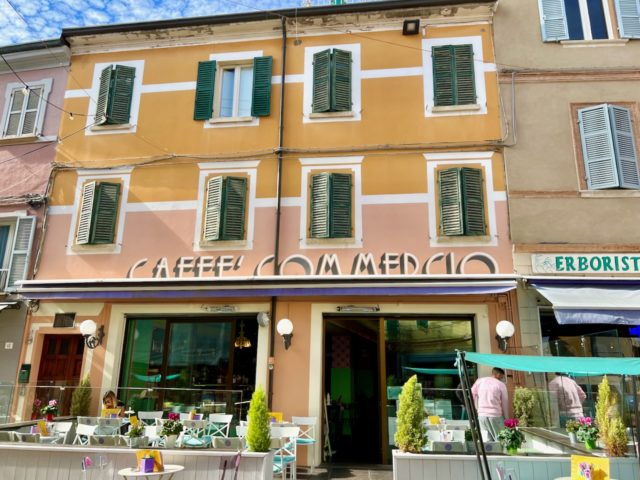
Enter through the iconic 17th century Triumphal Arch at the Ganganelli Square and discover the old town’s gorgeous streets as you slowly ascend the hillside. Look out for the cute Button Museum, the Porta Cervese (Cervese Gate) and the Church of St. Michael.
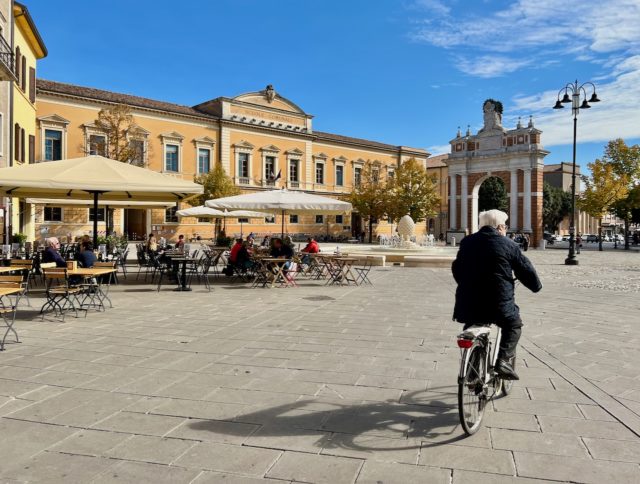
An intriguing aspect of Santarcangelo di Romagna is its underground network of tunnels and caves, built centuries ago (possibly by the Romans) for storage, living and defense purposes. Some of these underground passages are open to the public such as the Ipogei scavati nell’arenaria.
One passage I visited lies under the Lazaroun restaurant, which the owners use to age their unique cheeses.
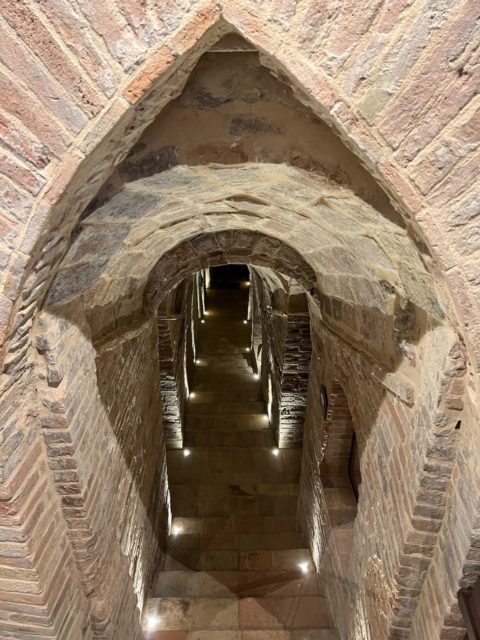
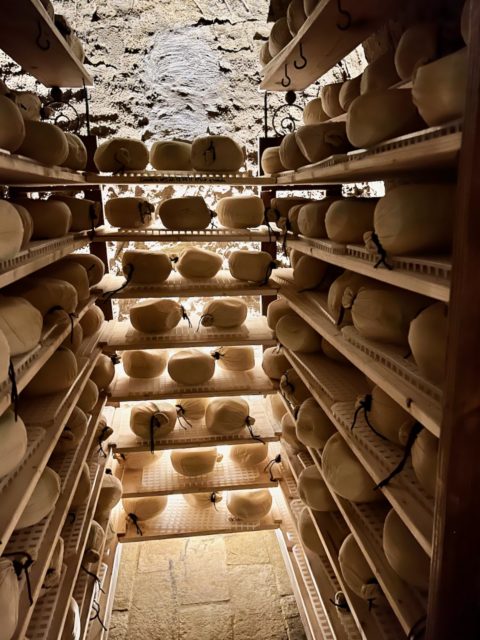
Saludecio
This rustic village in the southeastern corner of Romagna sits atop a hill and offers gorgeous views that extend all the way to the Adriatic Sea. Despite its small size, Saludecio (map) has the appearance of an important town.
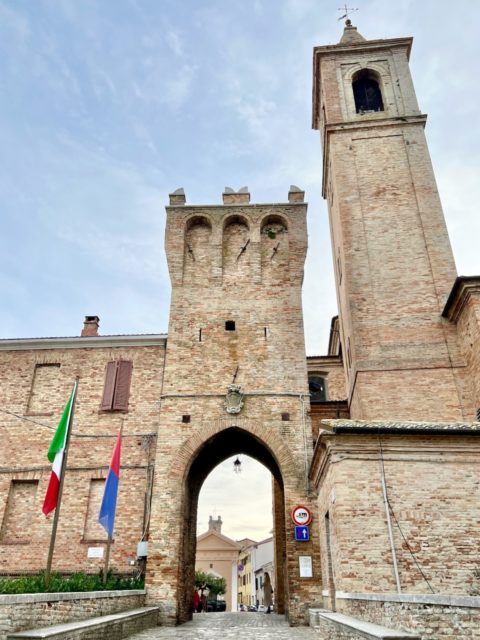
Starting at the impressive 14th century Porta Marina (Marina gate) and adjacent San Biagio Parish Church, two parallel streets run the length of the village, where beautiful houses and grand mansions stand side by side.
As you stroll down these quaint streets, you’ll soon spot the many murals that adorn the walls, making Saludecio a delight to explore.
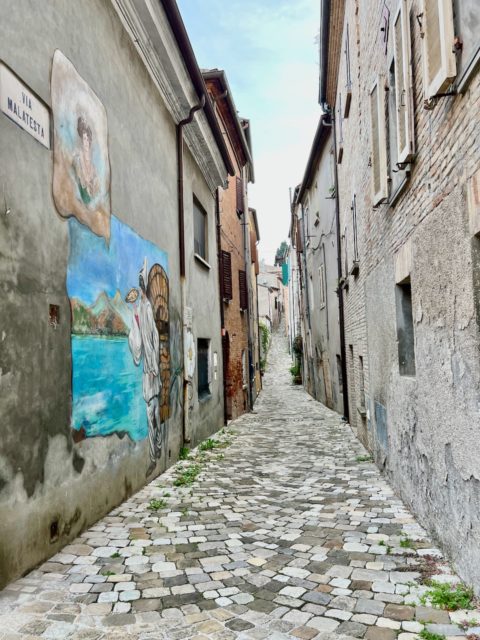
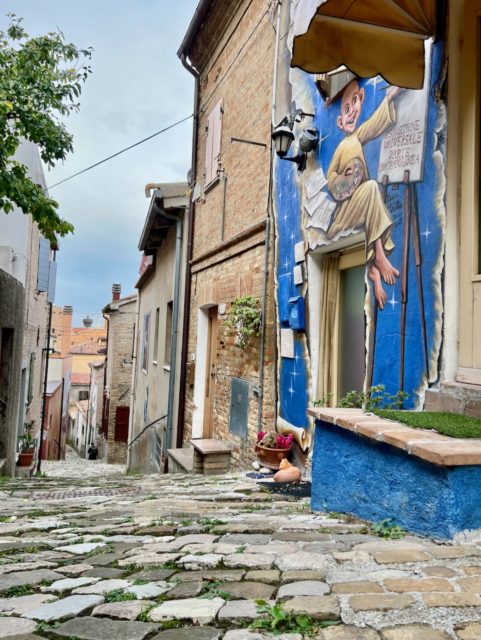
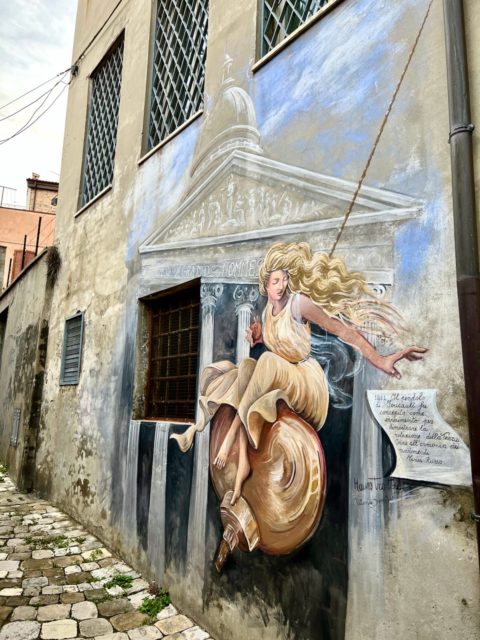
If you choose to stay in the area, I recommend Agiturismo Corte Decia. For dinner, head to Ristorante al Chiar di Luna, a rather outlandish restaurant with an incredible wine cellar and stunning food!
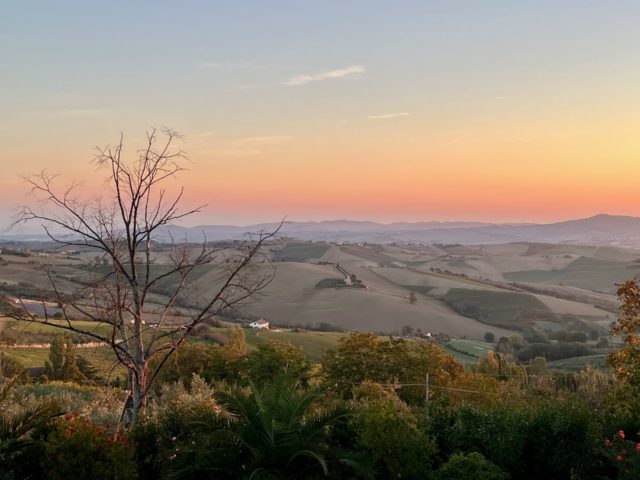
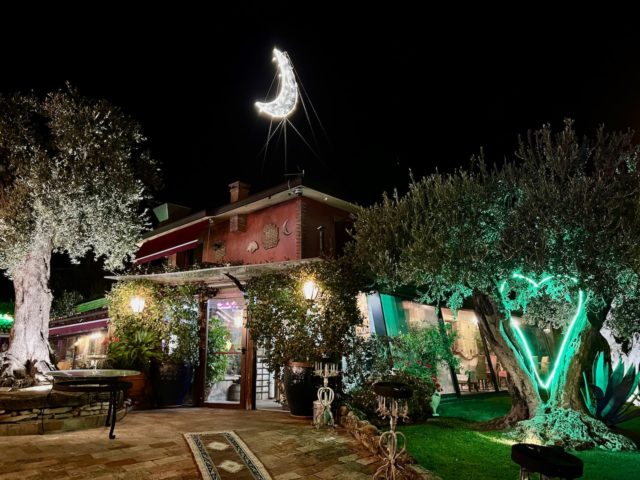
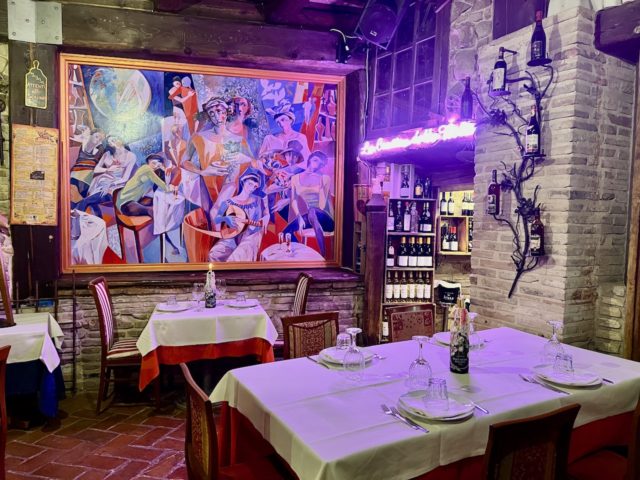
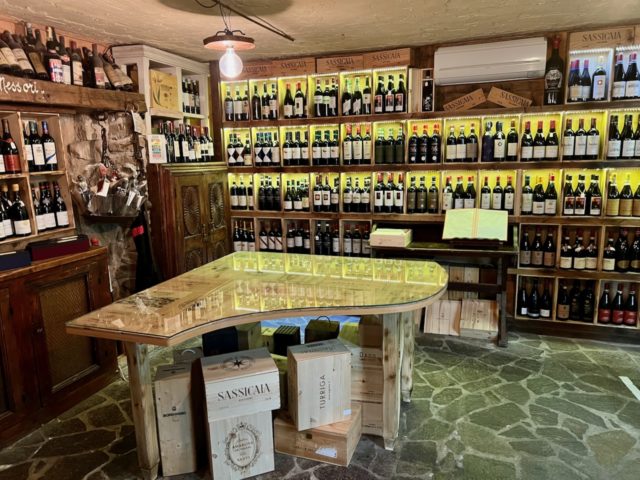
Read more about the hill towns of Rimini province
Rimini
Most foreign visitors know Rimini (map) as a seaside resort but look inland and you’ll find an ancient city centre full of amazing monuments, delightful eateries, quaint streets and colourful neighbourhoods.
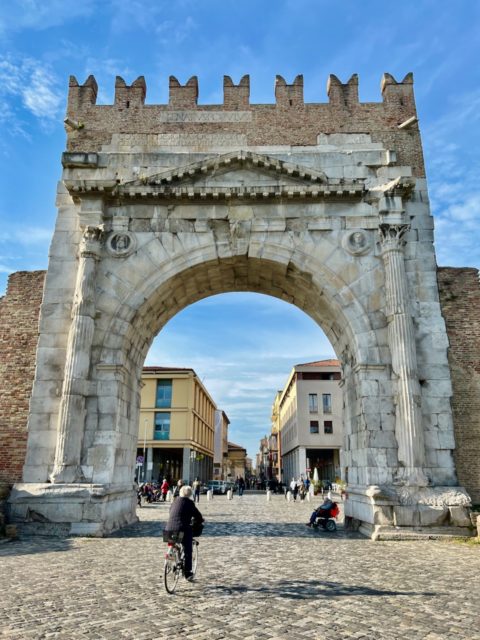
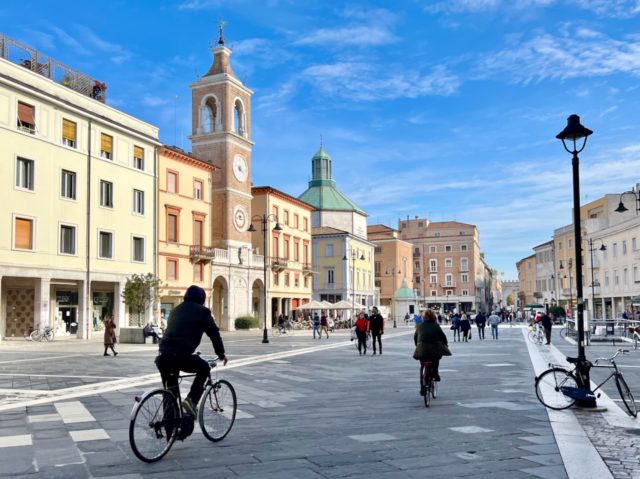
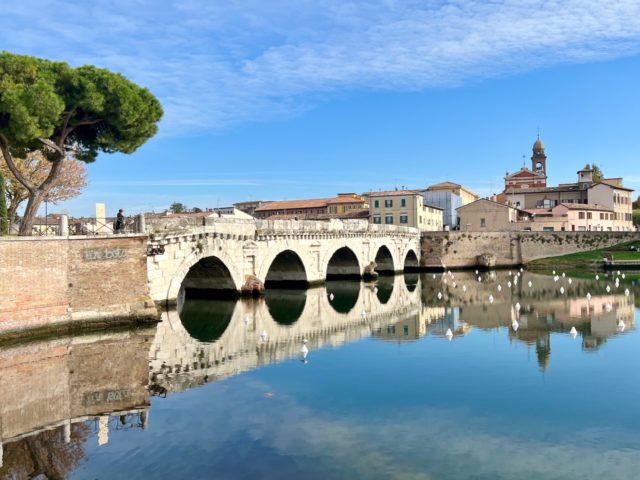
In Rimini’s Old Town, visit the Corso d’Augusto (the Arch of Augustus) which was built in 27 B.C., the Tempio Malatestiano (a 9th century temple), the Piazza Cavour (often a venue for open-air markets), Castel Sismondo (a 15th century castle) and the Ponte di Tiberio (a 2000-year-old bridge across the canal). Read more about things to see in Rimini.
Search for hotels in Rimini (Booking.com).
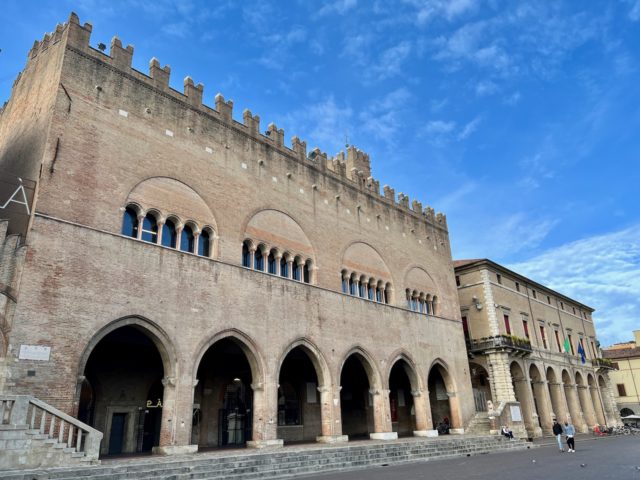
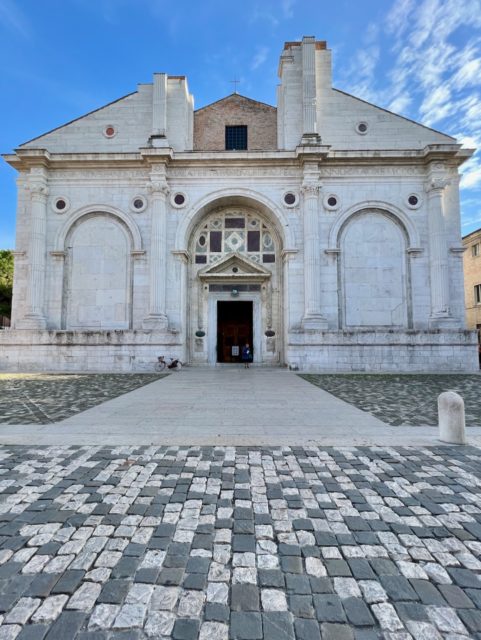
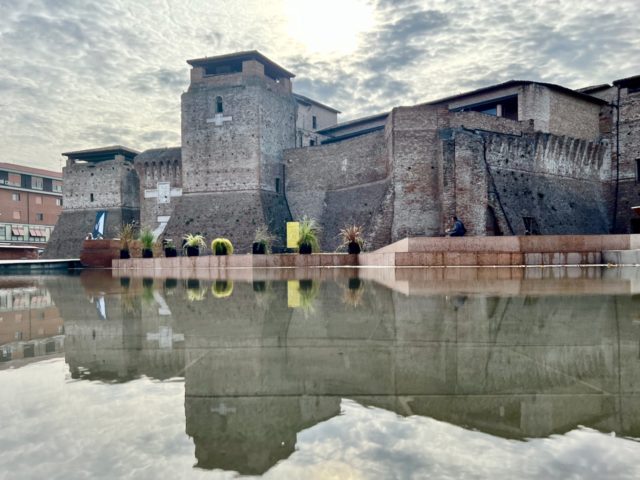
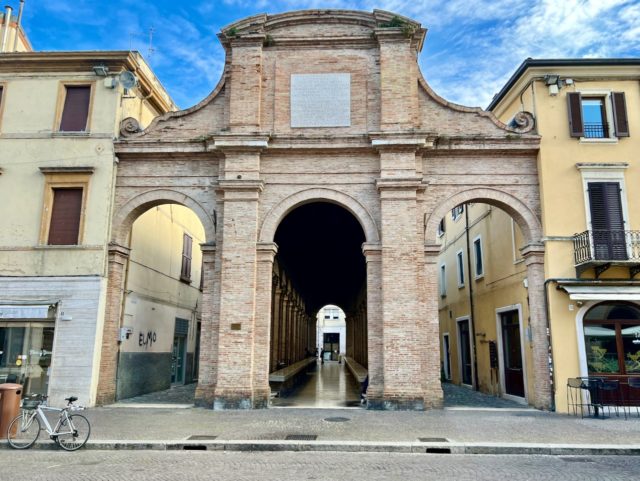
My favourite neighbourhood in Rimini is Borgo San Giuliano, just across the Ponte di Tiberio. This picturesque neighbourhood is packed with quaint alleys, colourful houses and beautiful street art (inspired by Fellini’s movies).
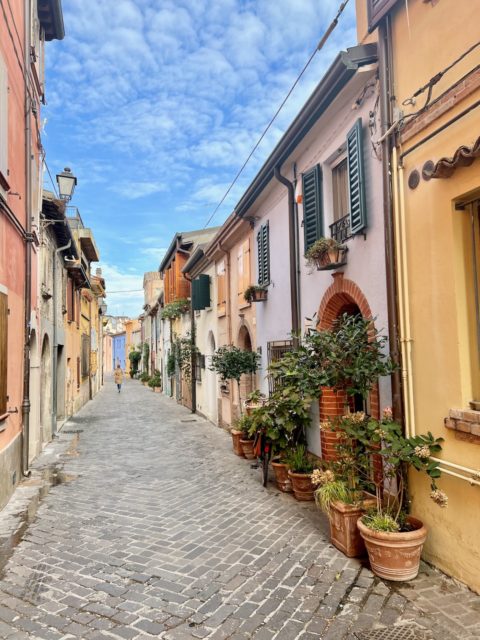
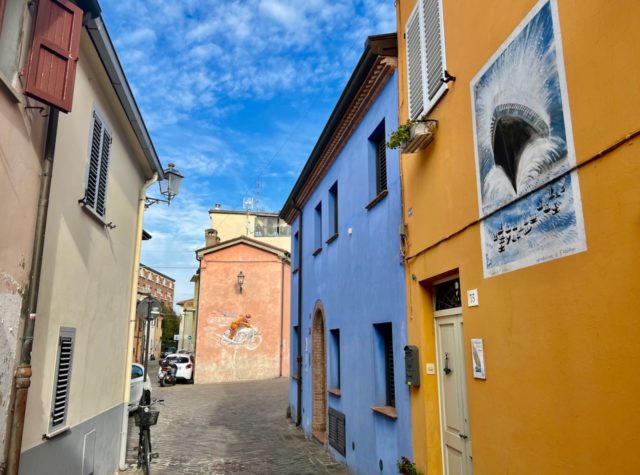
Cesenatico
This fishing town, northwest of Rimini, boasts a 16th century Canal Harbour which was designed by Leonardo da Vinci! Cesenatico is home to a fascinating Maritime Museum as well as colourful sailboats in the harbour. And there are miles of sandy beaches right at its doorstep!

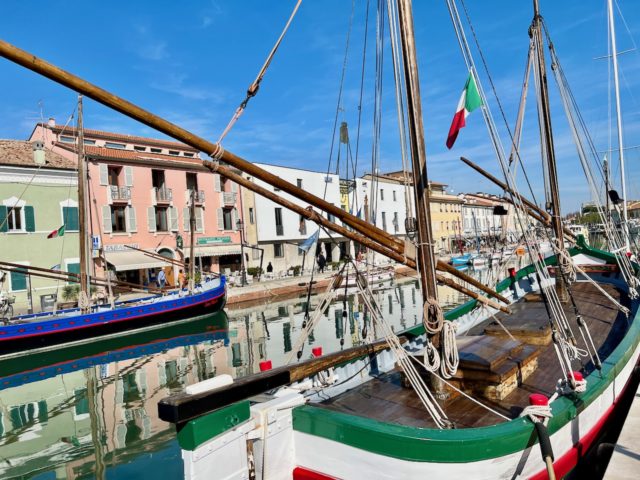
Cesenatico is also a terrific place if you love seafood – many restaurants can be found at the harbourfront. I especially enjoyed Ristoranti Pippo!
Search for hotels in Cesenatico (Booking.com).
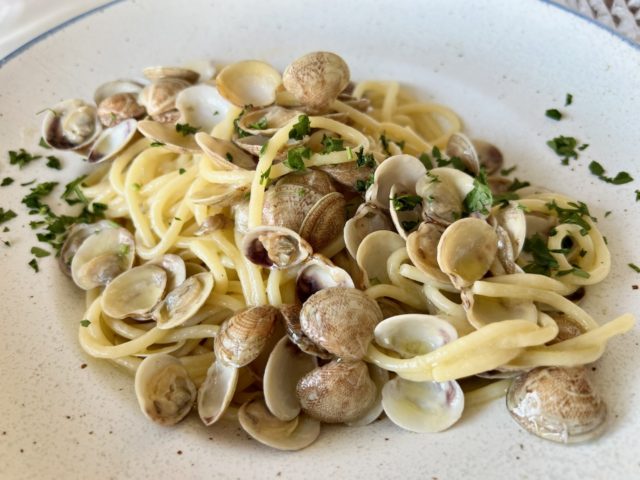
Ravenna
This ancient town is home to no less than eight UNESCO World Heritage sites! The 6th century Basilica di San Vitale, one of the most treasured examples of early Christian and Byzantine art in Western Europe, is certainly a must-see in Ravenna.
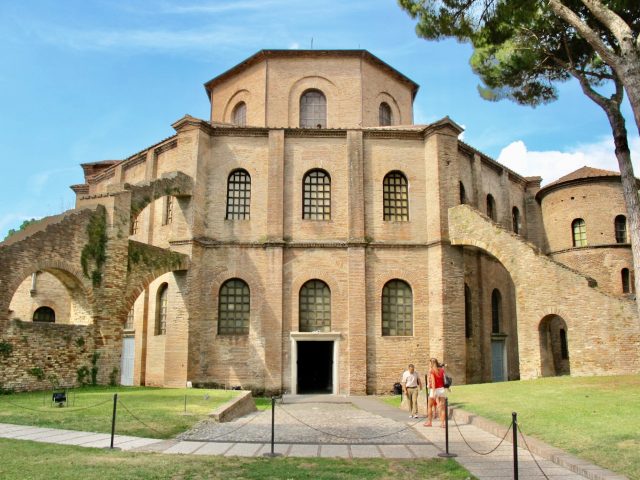
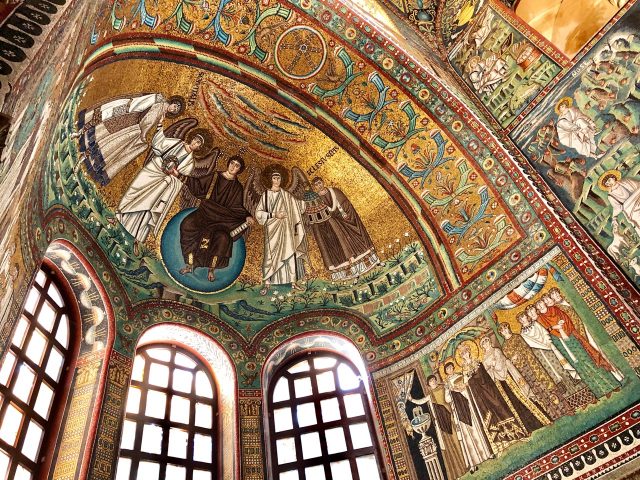
Right next to the basilica is another UNESCO site, the Mausoleo di Galla Placidia. The other UNESCO sites I recommend included the impressive Battistero Neoniano, the little but no less impressive Capella di San Andrea (both of which are adjacent to Ravenna’s Duomo), and the cavernous Basilica di Sant’Apollinare Nuovo. Read more about the 8 UNESCO World Heritage monuments in Ravenna.
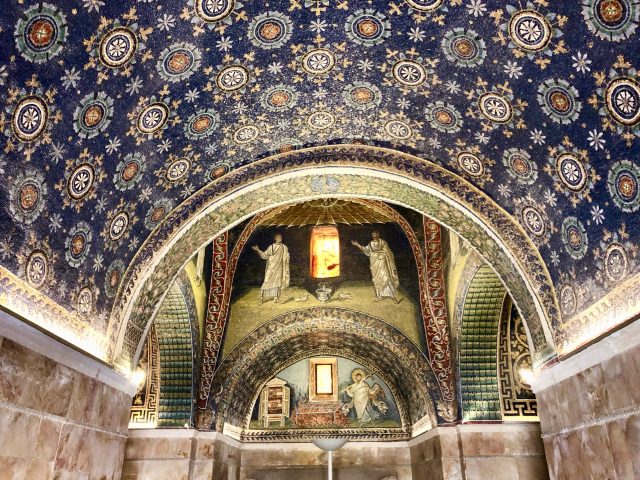
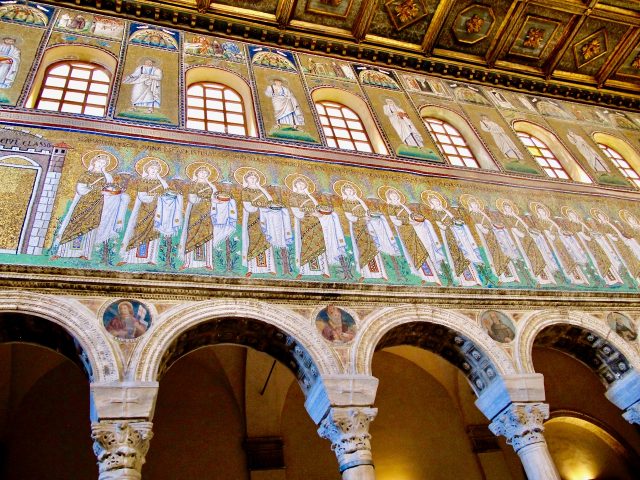
Other Ravenna attractions include the Biblioteca Oriani at the Piazza Sant Francesco, Dante Alighieri‘s Tomb and Museo Arte della Citta (MAR), with its contemporary mosaics and collection of artworks from the 14th to 19th centuries.
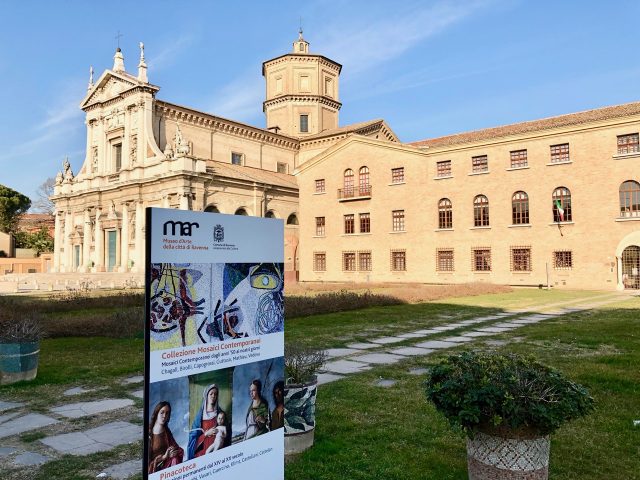
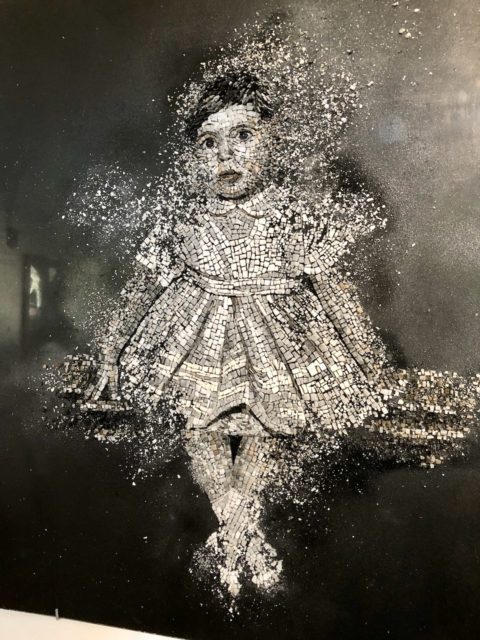
Just outside Ravenna, in the village of Classe (about a 15-minute drive), you’ll find another UNESCO World Heritage site: Basilica of Sant’ Apollinare. This 6th century church is another important example of Byzantine art.
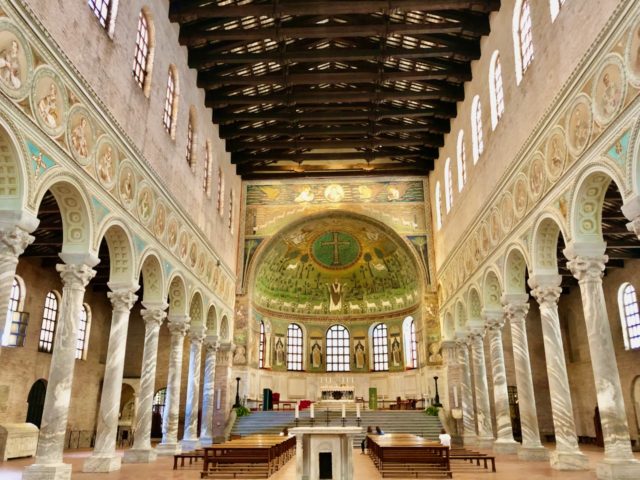
About 400 meters away, you’ll find the Classis Ravenna – Museo della Città e del Territorio, which tells the history of Ravenna through an impressive collection of archeological objects.
I recommend spending at least a night in Ravenna to truly appreciate the town’s historic sights and wonderful atmosphere. Read about things to do in Ravenna.
Search for hotels in Ravenna (Booking.com).
Comacchio
A fishing town just north of Ravenna, Comacchio is built on 13 islands at the edge of a lagoon. With its charming canals and bridges, Comacchio (map) is often called the ‘Little Venice’ of Emilia-Romagna.
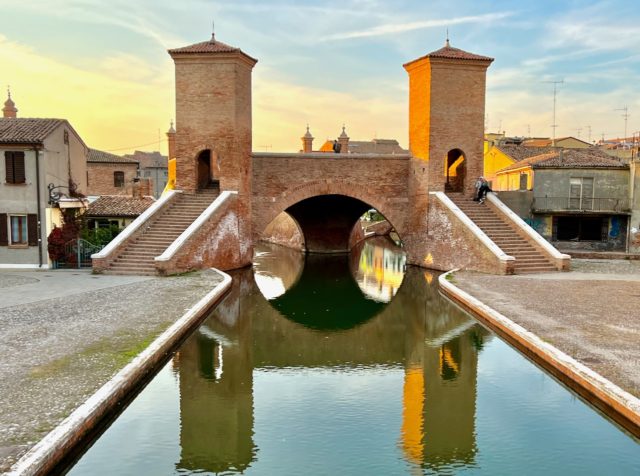
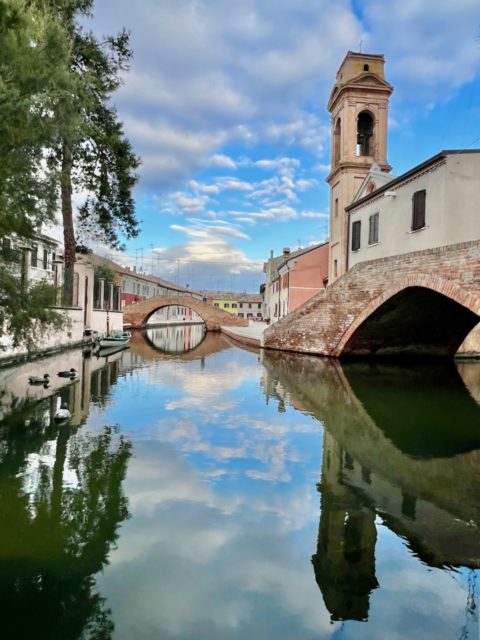
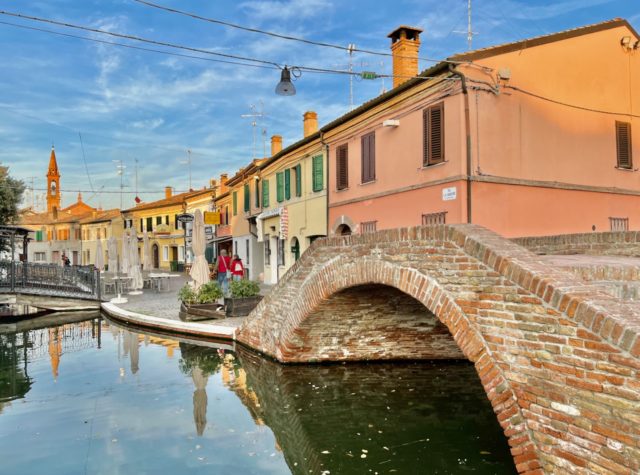
It’s one of my favourite towns to visit in Emilia-Romagna and I recommend spending a night here. Read more about things to do in Comacchio. Search for hotels in Comacchio (Booking.com).
Ferrara
A UNESCO World Heritage listed town, Ferrara (map) is known for its unique 15th century Renaissance urban planning and architecture. I suggest spending 1-2 nights here to appreciate the town’s wonderful atmosphere and architecture.

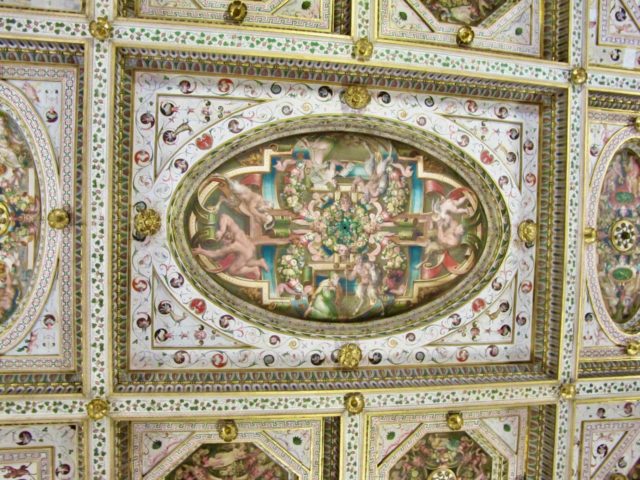
Visit the 14th century Castello Estense (its elaborate frescoes are amazing), the beautiful Cathedral and Town Hall, and the Palazzo dei Diamanti (the National Gallery). I also recommend exploring the southern district, with its maze of narrow alleys that date back to the Early Middle Ages. Read about my visit to Ferrara. Search for hotels in Ferrara (Booking.com).
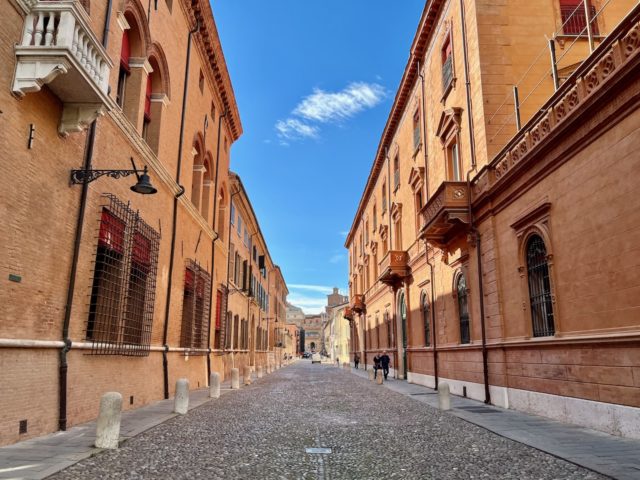
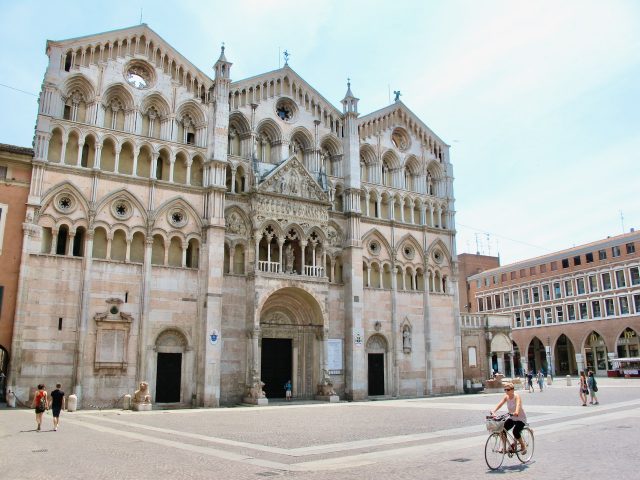
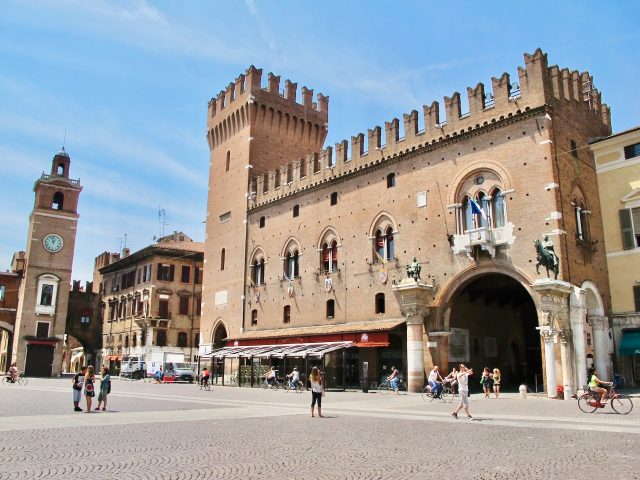
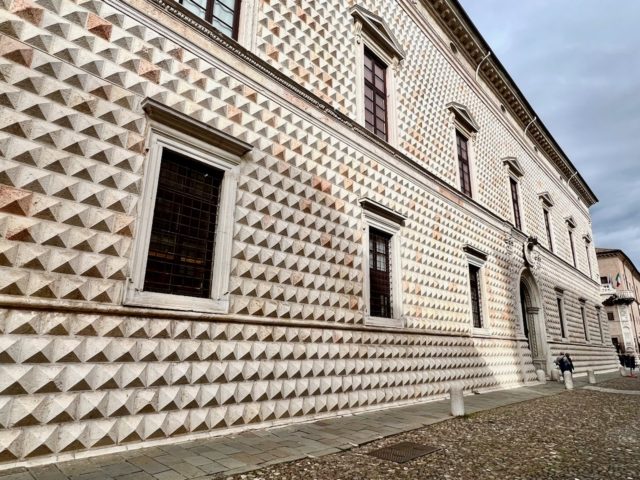
How to get to Emilia Romagna
Bologna has an international airport with frequent daily flights to major cities in Europe, as well as Dubai and Istanbul. There are also seasonal flights from the US East Coast. From Amsterdam, there are several flights a day to Bologna. Find flights to Bologna with KLM.
Bologna is also one of the most important rail hubs in Italy, with high-speed connections to Milan, Florence, Venice and Rome. Though you can visit most of the towns described above by public transport, I recommend hiring a car.
Should you wish to follow the route above, I recommend picking up a rental car at either Bologna Airport or Milan Malpensa Airport before continuing to Piacenza (both airports are about 1.5 hours from Piacenza), the first stop at the top of the Via Emilia. I recommend ending this Art Cities road trip in Bologna (drop off the car at the airport before heading for the city).
See my photo essay on reasons I love Italy
Note: this Art Cities of Emilia-Romagna guide was produced in partnership with iambassador and Emilia Romagna Tourism. All views stated above are mine.

